THE DE NOVO PROJECT
2022 Studio 10 Thesis Project
Tutors: Justin Cawley (Research) David Roberts (Design)

I would like to acknowledge the Awabakal, Worimi and Darkinjung people on which land this book was written sites were visited and where the project resides I would like to pay my respect to elders past, present and emerging

To get where "THE DE NOVO PROJECT" is today The project required constant questions of not just myself but industry and how safe to play such topics in the architectural realm In the early days, a subconscious caution of creating a project based on reality arose for me; as a project that could be propositioned and constructed tomorrow, would I be comfortable having a design that stayed within its lane, not questioning policy, behaviours or alternative ways of thinking? This lead me to economist John Keynes saying :
This led me to be bold with the project's design and intent A contribution that changes shape over time but also allows a constructive conversation around the effects of climate change, industries being affected by natural disasters and our transition as a state and country into a more progressive approach to such strong issues By all means, architecture can not change the world, but it can contribute to the required change or begin conversations This is a power we must take as a privilege and use to our utmost advantage in contributions to the world of the built environment
“When the final result is expected to be a compromise, it is often prudent to start from an extreme position.”
 Georges River oyster farmers Reg and Ken Humbley, of Sutherland 1966
Georges River oyster farmers Reg and Ken Humbley, of Sutherland 1966
What is De Novo ?
W H A T I S D E N O V O1The De Novo project, over 26 weeks of research and design iterations, is a period of deeper understanding and culmination of an issue that has shaped how I think about industry, infrastructure and people Their relationship with each other and the world around them as sole entities
To have this compendium as an object in its own right, we must first understand the lead up to this moment What is "De Novo"? It is a perfect representation of the project and its ambitions One in a shared sense of being :
anew; afresh; again; from the beginning
Alternatively, a De Novo is used in biology and ecology quite regularly to describe new mutations or evolution for the first time To me, this encapsulates the essence of the project A response to the aquaculture industry in an attempt that rethinks and evolves what was once known into new methods and understandings of farming
In a way that holds its own and sparks debate and interest around broader political and social issues across not just the cited intervention but across the globe Although projects like this seem straightforward in layout, it was anything but A complex expansion and retraction weekly narrowing down a research question to finesse and fine tune the aims of the issues at hand
Over time, the port has also shaped the people who call the city their home What happens to a place or industry when one day it's there and the next its gone? This has already happened once before, back in 1999, when BHP closed its doors on Newcastle, and the relics of a steel fortress remain Nothing was done too hard to resolve Hushed away on the city's fringes to be solved for another day Yet as we come closer to 2040, the plans for such a vast exportation metropolis lay bare A place that has brought riches yet has damaged so much in its path It has polluted local waterways and landscapes and has contributed to the global impacts of global warming beyond the lower banks of the Hunter River This pushed me to find an alternative after coal, a way that people could engage with industry, a place that was open to the public and wasn't a parasitical replacement to what Newcastle has had to lay with for the past two centuries
The project initially began as a curiosity about Newcastle in 2040 and beyond, with the humble oyster not in the picture This project started questioning our relationship with the harbour and its 200 year old history How industry has shaped
Through early research on water quality and solutions to aid in repairing the Hunter River, aquaculture was a possible solution, especially in the oyster industry The resreach that this compendium will entail leads to the query of how a historical coal industry and a historical oyster industry in decline can merge together through cited intervention to reshape Newcastle for a new economy repair damages and seek fiscal longevity for all parties involved through architectural research and solution on an infrastructural scale yet have balance in the sense of experience and memory in an emotive scale of tactility, smell and memory of place A complex challenge; however, this was my journey to reach De Novo
AN INTRODUCTION TO THE YEAR THAT WAS


A Place to Call Home
A SELECTION OF INDUSTRIALISED LANDS
2The beginning of the project required a place of cited intervention Naturally, being in Newcastle, I wanted the project to be based within the region To me, the harbour and fringes of the city, through other studies, have always provided such rich history and insights into the city, which we take for granted daily These places and shapes around Newcastle were fuelled by the city's first ever exportation of coal to India back in 1799
A P L A C E T O C A L L H O M EThis depth of history allowed the creation of strong foundations for the project moving forward regarding the site Initially analysing Newcastle, there were multiple points of interest across the harbour The old maritime museum of Lee Wharf drew me through the early days Due to its inactive use and a public domain behind it, it was underutilized in such a crucial spot along the foreshore Could the introduction of a new aquaculture industry in Newcastle find itself a home on this foreshore fringe? Although Lee Wharf has a great presence on the foreshore and the amount of development talk about the site, it would have been a great counter argument to have regarding the ambitions of Newcastle City Council and what may be required for the survival of such places, the site didn't seem broad enough for such a bold argument of a new industry turning a coal city into an aquaculture city
Research shifted beyond the water's edge to look at places like Dyke Point, Stockton and Walsh Point On analyses, it became clear Newcastle's man made harbour where based around points These points are somewhat of a motif for the process of coal exportation and process All providing or still serving as important infrastructure
For the industry today Walsh Point was the furthest up the Hunter River and closest to the industry I was trying to replace The site offered open vegetation space in front of gas or liquid properties The issue with the site was access Getting here would be a task, and it is a site you can't directly see from the foreshore of Newcastle CBD Its close nature to current industry trade means the site's suitability for public engagement regularly was risky, and the construction of a brand new facility would provide an expense and contribute to the carbon and emissions output we are trying to mitigate with a new, greener industry
Closer to the Newcastle foreshore is Stockton A site that is an open public domain underutilised and hosts a wharf terminal that connects Stockton and Honeysuckle This site is positioned beautifully to look back upon Newcastle and has an interesting relationship between residential dwellings and infrastructure Ends of streets are shadowed by foreign coal ships during the day, and at night, the port glistens like a lost city on the horizon However, the issue with most of this area is its susceptibility to flooding due to its low lying nature Would this be ideal for a new industry and one that activated public engagement? It is also the furthest to get to unless taking the public transport option of the ferry across to the site, and for a proposition that encourages high public interaction and engagement with industry, this doesn't seem to match up with the projects core values
This led to the chosen site of Dyke Point Sitting at the tip of Carrington this man made island facilitated huge exportation activities during the
the late 1800s through to the mid 1950s The site was a connection between the mines and the foreshore, with dense rail lines transversing the area and through Carrington on a rich and heavy industrialisation scale The edges used to be home to dense loading activities, but as demand rose from foreign bodies scale of trade had to be intensified as well as the rise of BHP's new infrastructure was possible; thus coal exportation ceased at the point moving further up the Hunter River In 1942 the Dyke Point shed was constructed as an engineering and storage facility at a grand scale of 160 meters long and, over the years, has reshaped itself with a reduction to 120 meters and additions to the shed However, today it is no more than a holding yard for excess scrap and storage for the Port Authority of Newcastle
The site positions itself directly across from Honeysuckle and is the base of the Hunter River, the current industry and is at a vital crossroads for activities across the harbour The current shed still being there promotes the idea of adaptively reusing the shed for the project's ambitions A second life for the point and the structure, as well as it being an extension of the public thoroughfare Dismantling it, however, also provides the opportunity on such a vital site to promote the disbandment of the coal industry, promoting a new style and fabric of infrastructure at a scale that is more proportionate to the aquaculture industry
Through the first half of the year, this was a battle between the right path to choose and the development of an adaptive reuse project was triumphant after Stage 1 results and tests
De Novo, regardless, was at home at Dyke Point
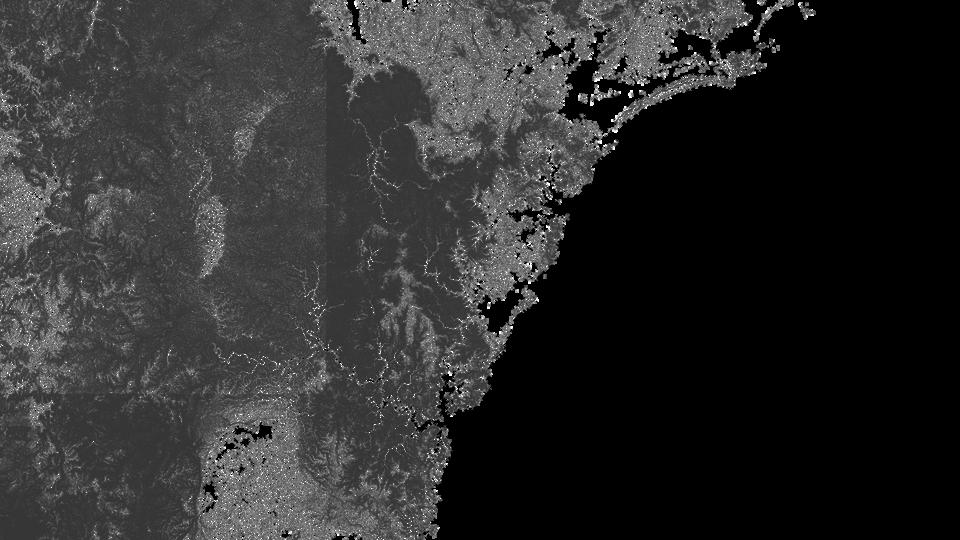
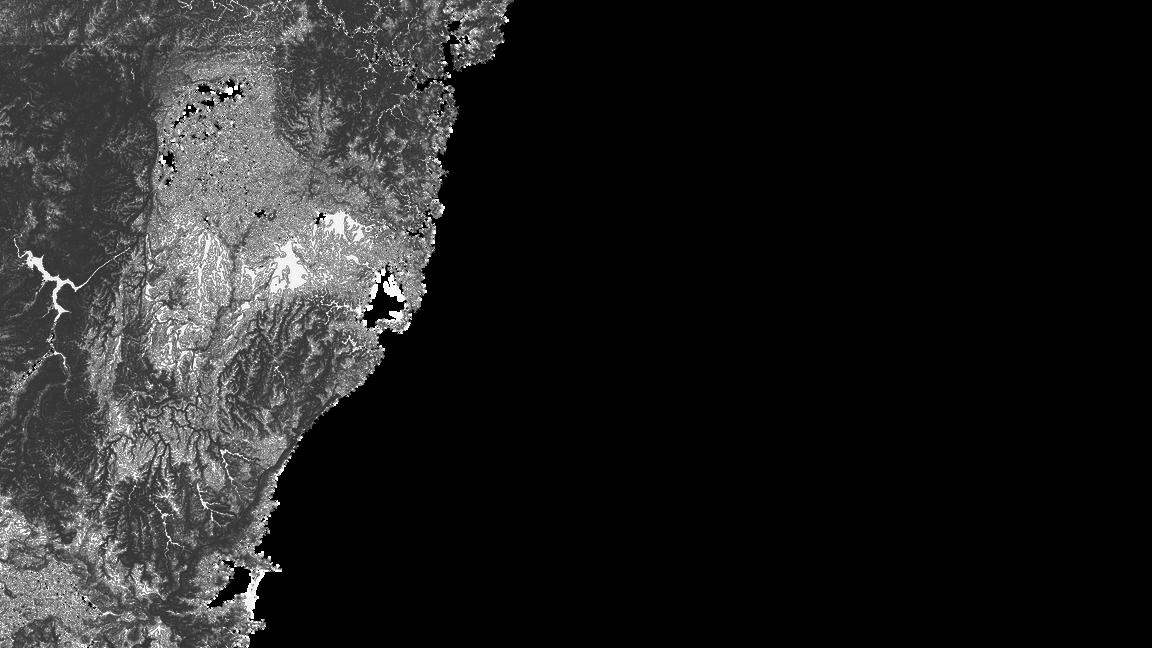


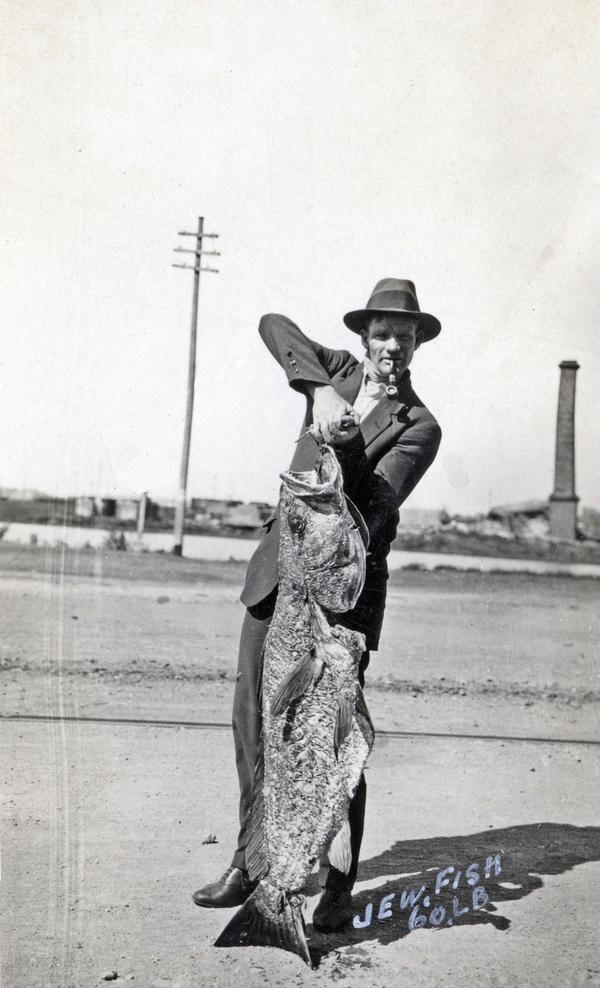
 Dockhand and Dyke Point catching a JewFish on his lunch break
1940
Newcastle Harbour Mapping 1918 Coal loading at The Dyke with Number 13 crane
1894
Dockhand and Dyke Point catching a JewFish on his lunch break
1940
Newcastle Harbour Mapping 1918 Coal loading at The Dyke with Number 13 crane
1894
 Carrington Harbour and Dyke Point1904
Carrington Harbour and Dyke Point1904

 Dyke Point as an engineering and maintenance facility1945
Dyke Point as an engineering and maintenance facility1945
77 years on

A FISCALLY AND POLICITCALLY DRIVEN PROPOSAL FOR 2040
3This part of the project bring in the early period of the year, took the approach of using Dyke Point as an aquaculture hub of NSW This being a replacement industry for coal It led to the thesis question at the time of being:
species of marine life back into the harbour Some which have disappeared due to high levels of toxicity in the water and the continual actions of dredging the harbour floor to make way for ships to enter and leave the port
S T A G E 1A massive question and one that was too broad at the time, which promoted the emphasis and scale of the project The scale was a massive factor at this point, not just regarding the site's overall mass or the typology of forms on and around the site but the scale of the coal industry and the aquaculture industry in regard to an alarming fiscal gap Through early research, the projects ambitions to replace coal, like for like looking back now, were never attainable at this stage of the year So the approach of what could be obtainable was at the forefront, creating one of the biggest oyster farms in NSW, with the harbour being the canvas for this proposition The project's theoretical ambitions of being a 2040 takeover meant the room for coal ships wasn't required this could be replaced by multiple methods of oyster farming
This canvas rollout led me down a path of the aquaculture industry being oysters and their properties as a marine super cleaner Researching provided filtration rates of oysters and the time and capacity it takes to make dirty water clean This was ideal as one of the objectives of the project was to clean the damages the coal industry has left behind Promoting a better relationship with our waterways and having the ability to attract new
The base of this radical sweeping of oyster lots across the waterways was founded at Dyke Point, where the original holding sheds were removed, creating new architecture and infrastructure to replace, including restaurants, accommodation and production lines for shucking, collecting and producing other aquaculture produce Although a great attraction, the reflection on the project raised a few issues The reliance on oysters as a major player in the fiscal replacement was to risky, even the addition of other arms of the NSW aquaculture industry being introduced here would mean the wait time for cleaner waters and a return on investment wouldn't be viable for 4 5 years at a minimum Especially with the oysters grown in natural ways and the water quality of present means that the majority of the oysters would need to be thrown away creating mass food wastage and would struggle to grow at a normal rate of full maturity due to these poor conditions In hand, this wouldnt at all aid the recovery of the water quality in Newcastle but rather add an additional hindrance
Harbour farming at this scale could be a reality and aid in water filtering, the mass scale could also come across as having the same environmental impacts as coal in the long run The proposal of this scale and design would be best suited perhaps for ports located elsewhere around the
"How can the redevelopment of coal ports for residential and commercial uses facilitate ecological regenerative industry?"
Or where sites are less impacted by pollution resulting in quicker and more sustainable yield and farming However, the information on filtration and the ability to know the fiscal competition of the project was non viable helped shape the project into the next phase and were built upon to develop the project into one that adapted more to industry needs and people and less about a replacement industry beyond 2040 for Newcastle



It also enabled me to focus on the scale of the intervention for it seemed to disconnected and almost uninviting to any public realm engagement due to the scale of buildings and there spread apart nature






Oysterless 4
A PERIOD OF REACTING TO CLIMATE TURBULANCE
O Y S T E R L E S SAfter stage one and throughout the fortnight that surpassed that delivery, the NSW east coast had been suffering from one of the worst La Nina periods in recent memory Flood and damaging weather conditions continually battered the coast resulting in millions of dollars worth of damages to communities from homes to businesses One of these damages and highlights on newsreels were oyster farms It raised my attention as the project was proposing the canvasing of oysters across Newcastle harbour to clean the water quality However, incidents like this would mean my proposal was on its knees and a refocus and understanding of the oyster industry and these local businesses needed to take place to understand the daily life of these people and what is happening in the industry Is it a one off event, or is it a continual pattern? How long does it take to recover? are there underlying issues within the industry?
This led me to further research the industry in its current shape Statistics didn't seem to match up when looking at the NSW aquaculture report of 2021, as stated in the previous chapter This expected 17% growth surely was going to take a decline As the days emerged, more and more oyster farms reported damages across the coast
Five of the highest contributors to the NSW sector were heavily affected Initially, these are seen as companies that make a fair fiscal gain but looking further into it, these farms are local families and businesses with a rich history that run deep through communities all up and down the coast
The susceptibility to unprecedented and more extreme weather conditions was an issue that needed addressing Thus the project shifted from
A proposition of an oyster full harbour to one that would save the oyster industry from becoming oysterless For this to happen, an understanding of what made a farm work had to be understood In this chapter, I analyse the top 5 oyster farms in the state and their loss to date This was the first disaster to happen in 2022 however, as the year went on, some of these farms had five natural disasters and water quality issues resulting in one of the worst years in history
I decided, as a part of my research too, to visit my local oyster farm, the Broken Bay Oyster Co and meet Bruce, who has been an oyster farmer for now 25 years and has been a passion of his since he was 18 years old living in the footsteps of his father Through site visits, I understood ways of cultivation, tidal importance, water flows and methods that suit the waterways of Hawkesbury Bruce also showed me a hydro system that has become an essential part of many farms along the NSW coast This system was a cultivation method on land, creating an environment where oysters could survive regardless of natural weather events However, the plan was small and used only to protect spout production periods from guaranteeing the next generation of oysters But maybe this was the answer, through an architectural contribution, the creation of a sustainable industry protected from the elements and a home for the industry to live on regardless of external factors This to be explored in the next chapter though
Additionally, it appeared the oyster industry had become more than an industry of aquaculture rather, due to these events, businesses were trying
Alternative ways to create revenue This was done solely through tourism, experience services, and selling waste products to other businesses This includes consuming oysters within waterways, touring the farms, and a significant push of tours for tourists and opening their doors for wholesale prices to try and push product These alternative methods of fiscal support meant the focus was shifting away from what businesses were best at and also meant that time and effort of finding other ways to farm were being restricted based on the grip hold this event where having However, according to the Department of Primary Industries, these events have been predicted in the past few reports Still, with no solution to the potential of these extremes, the approach of reaction to the disaster was chosen rather than mitigation or prevention
With much information on board from the site visit and resreach, I began the analysis of oyster farms across the NSW coast, including the varieties flow rates, growth style and damages to understand the matrix and depth of the reoccurring issues so that my proposal would reduce the likelihood of this happening in the future
Black Lip Pacific
Sydney Rock
2001
The History of Oyster Farming in Australia J. Nell
The top, Sydney rock (66 86 mm shell height), coral rock or milky (59 79 mm), and flat oysters (71 77 mm) and at the bottom, black lip (73 97) and Pacific oysters (76 104 mm)

Sitting along the banks of the Hawkesbury River in lower Mooney Mooney, the Broken Bay oyster company primarily uses surface tray methods since 1962 This method allows oysters to dip in and out of tidal flows however are susceptible to debris drifting in waterways, especially after extreme weather events There is an even mixture of high flow and low flow setups across the lots This matches the results for protected or unprotected zones, which usually match the flow charts The Broken Bay Oyster Co has the most even spread on the matrix out of the five and results in consistency in product (Grows: Black Lip, Sydney Rock and Flat for Pearling)

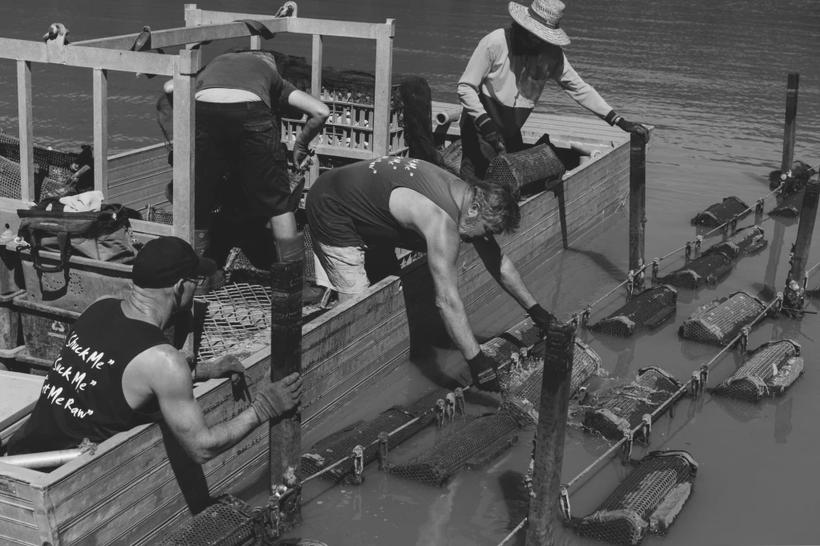
L O W F L O HW I G H F L O W
S U R F A C E T R A FY L O O R B E D T R A Y P R O T E C T E D B A N K S U N P R O T E C T E D B A N K S
E Y



CO)

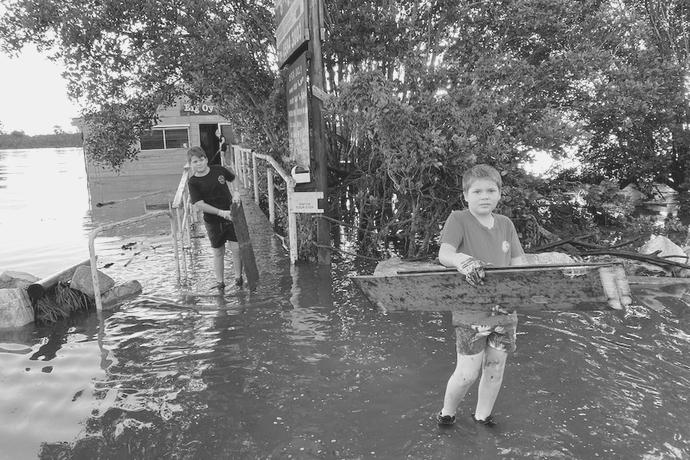
The Port Oyster Co has two establishments in Port Macquarie: the farmhouse itself and the Big Oyster, which is their wholesale wing and is pictured above Both sit along the banks of the Hasting River system Having a similar opening to the ocean and river flow as the Hunter River, this analysis is almost like for like Their lots are open and rely on high flows, with a mixture of underwater floor trays as their predominant option This can be risky and needs to usually be managed closely as rough water and storms can result in turned water and stagnant oyster growth (Grows: Pacific and Sydney Rock)

L O W F L O HW I G H F L O W
S U R F A C E T R A FY L O O R B E D T R A Y
P R O T E C T E D B A N K S U N P R O T E C T E D B A N K S
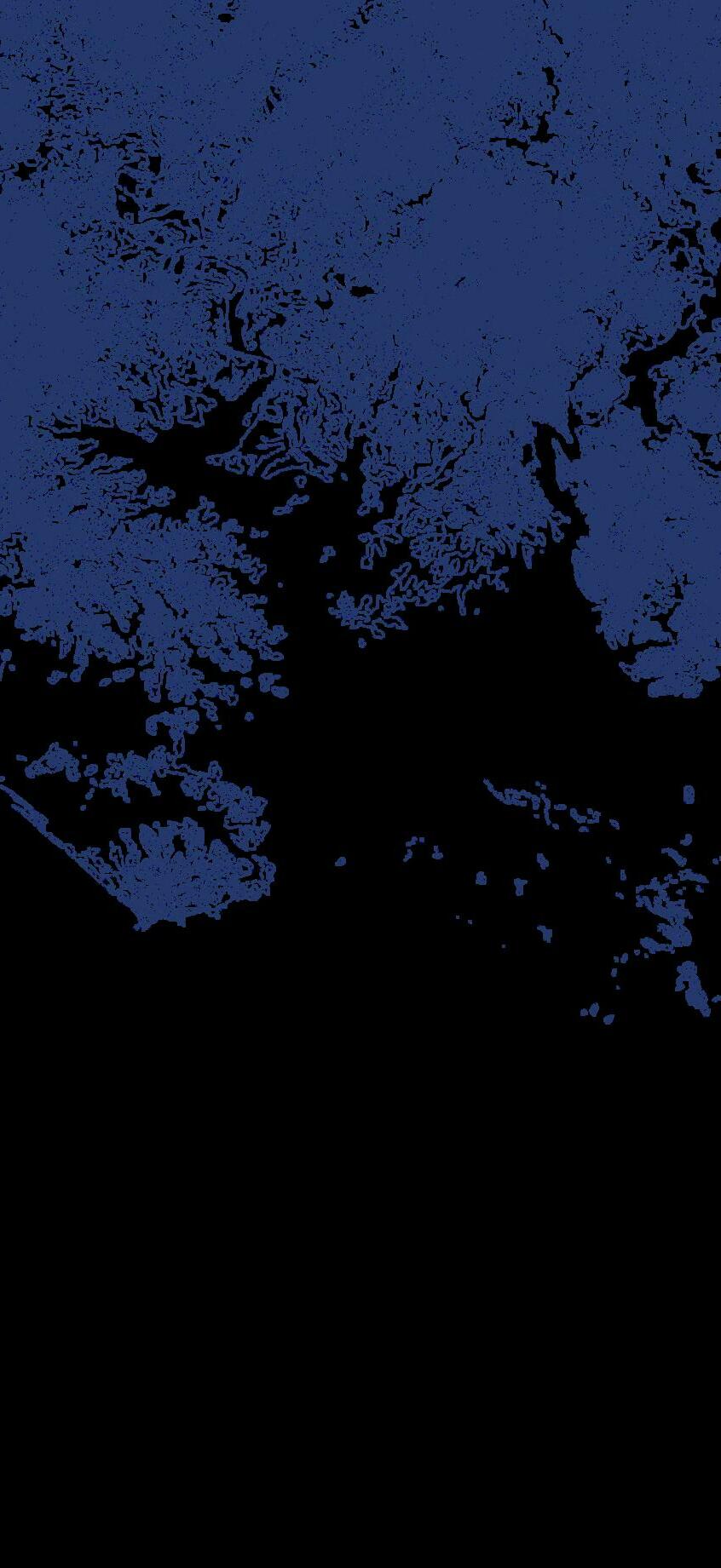

BATEMANS BAY (WILMORE OYSTERS)

ore Oysters are the largest operator of the Clyde followed by Royston Bro Oyster company Both milar methods of farming However, Wilmore's re predominantly located on Clyde's Southern Most of their oysters are in protected banks and ets and sit behind Pelican Island to reduce the ces of extremely high flow occurecnes ver, with natural disasters bank locations pool s, as pictured which can be risky relying heavily on this location type (Grow: Black Lip and Sydney Rock)

L O W F L O HW
G H F L O W
U R F A C E T R A FY L O O R B E D T R A Y
R O T E C T E D B A N K S U N P R O T E C T E D B A N K S

H I G H F L O KW E Y L O W F L O W M A J O R O Y S T E R L O T
m sits at the base of the Pambula River and Lake amongst low lying waters This allows a ant use of a surface tray technique However, at the base of both waterways means the lots are shed twice daily with cool oceanic water er, this leaves flooding events to create strong ides and damage these surface lots, as seen These banks are also unprotected as both of water meet (Grow Sydney Rock)
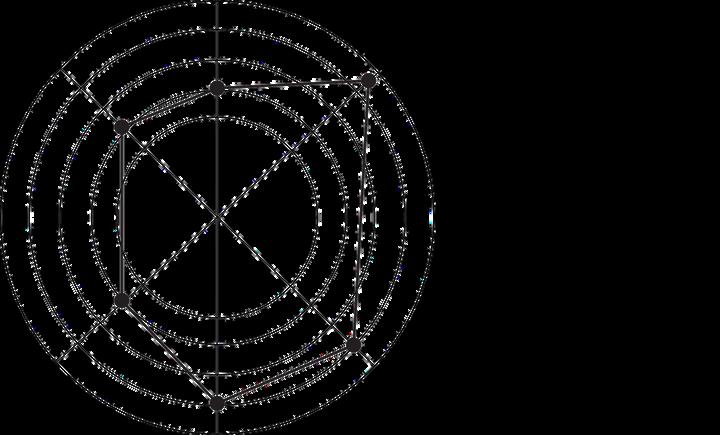


R O T E C T E D B A N K S U N P R O T E C T E D B A N K S




I G H F L O KW
Y
O W F L O W M A J O R O Y S T E R L O T
Brisbane Waters is a body of water that tips at the base of Gosford and feeds down to the Umina A relatively open body of water with very low flow properties This enables a canvas approach to oyster farming However, these lots are surrounded by heavy urban sprawl in some areas resulting in pollution, such as plastics getting caught up in farming lots The area provides a combination of both growth techniques with strong results averaging around 400,000 oysters sold out of this estuary yearly However, with the recent disasters, this is likely to be cut to 175,000 200,000 (Grow: Sydney Rock and Flat)


 BRISBANE WATER (WESTRAY OYSTERS)
BRISBANE WATER (WESTRAY OYSTERS)
L O W F L O HW I G H F L O W
S U R F A C E T R A FY L O O R B E D T R A Y
P R O T E C T E D B A N K S U N P R O T E C T E D B A N K S


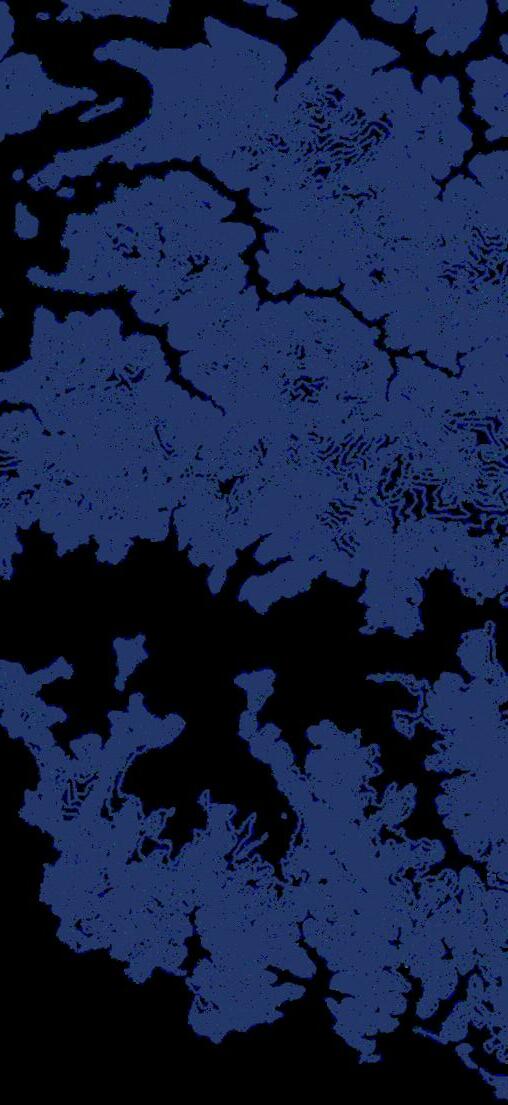
Stage 2 5
A VITAL DIRECTION CHANGE
S T A G E T W ODue to the impacts discovered after the first stage, the project looked closely at the findings from the oyster analysis, as observed in the previous chapter This massively changed the direction of the project in comparison to the first stage The intent was to keep the main holding shed rather the removing it completely This allowed us to reduce costs and host the filtration system that would see a new way of oyster farming within the NSW This filtration system was observed at the Broken Bay Oyster company and is a system that was used in some places across the state It enables the protection of vital spouts, which can be worth millions of dollars to local businesses However, these hydro setups w nature and used a horizontal p traditional oyster methods So t set to create an architectural re a system that could reduce the grow oysters and clean up Newcastle by placing a filter an one end feeding the water to t them to clean the water for a s the water was returned to the h over time, cleaned the harbo better relationship with water an
This system wasn't going to be rather an expansion on the curr up and resreach of filtration of h important to keep the salinity during this filtration based on oysters needing it to survive As see , t e s allest imbalance in ph can drastically alter crop and oysters survival Learnings from Japanese oyster farmers there filtration techniques brought to the forefront Nanobubbling This is a method used to
separate heavy contaminants in the water to the top while keeping the vital nutrients and salinity at the bottom This method would allow the extraction of the Newcastle harbour water and split the contaminants with the natural requirements to then be passed through the rest of the filtration system
To be sure of the scale of the system among the architecture model test where done at 1:1000, measuring the average oyster lot size and scale of the building to propose the correct placement of the built from and the system as gravity would be a major factor with any project moving liquid around

(b) (c)
(a) (d)



( a ) P h y s i c a l S t i m u l a t i o n ( b ) M i r c o b u b b l e F o r m a t i o n ( c ) C o l l a p s e P o i n t ( d ) D e c o m p o s i t i o n o f o r g a n i c c h e m i c a l s
System Break down
( a ) ( b ) ( c ) ( a ) V i e w i n g P l a t f o r m ( b ) E x t e r n a l p i p e c a r r y i n g O y s t e r t o w e r r u n o f f ( c ) B l a d e d j e t r e t u r n i n g c l e a n e d w a t e r b a c k t o h a r b o u r w h i l s t c r e a t i n g w a t e r f l o w f o r n a t u r a l o y s t e r p l a c e m e n t


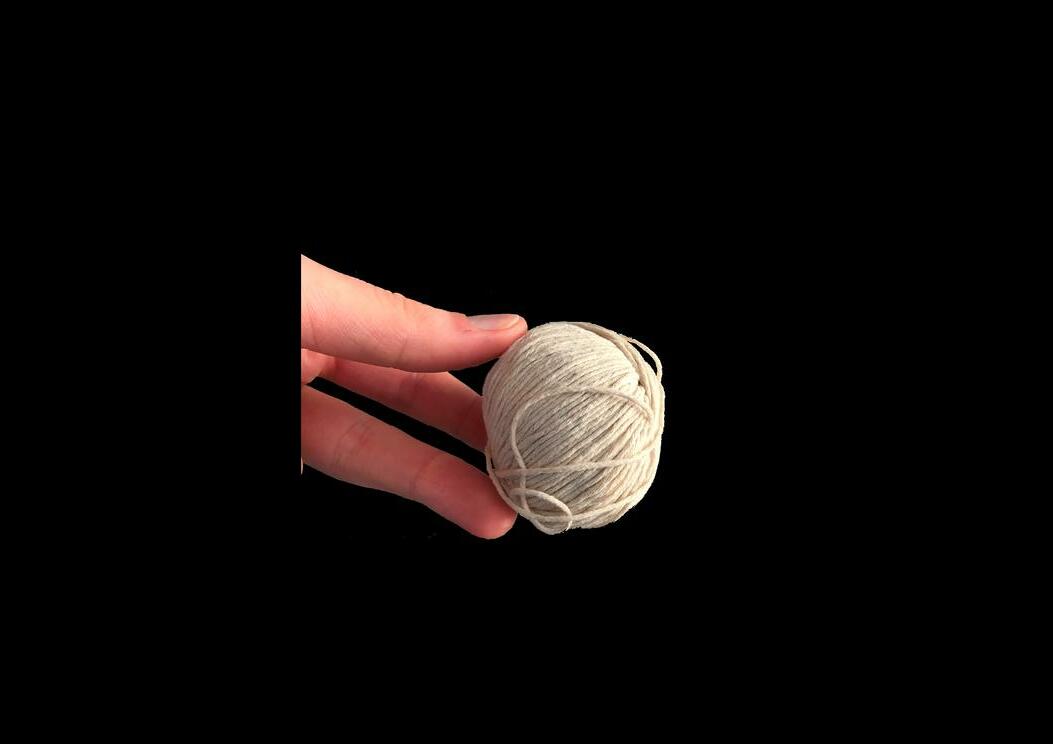

The process of form making to aid in the system and infrastructure of the assisted vertical oyster farm Using previous components of the Dyke point shed, these were trialled in multiple ways across the site until the infrastructure matched site objectives and understood the environment AOP1 6 was selected based on its swung arm nature extracting water from Hunter River and disposing of it on Throsby creek overtime cleaning the harbour
A process of testing Using the average grid size of an oyster lot with a 1:1000 scale model , the test involved trialling specific locations along Dyke Point that would facilitate the natural oyster growth component of the proposal The test focused on the Hunter Riverside as well as the Throsby Creekside Based on on site factors and possible consistent yield that DPOP1 8 would be selected as the prime grid format moving forward








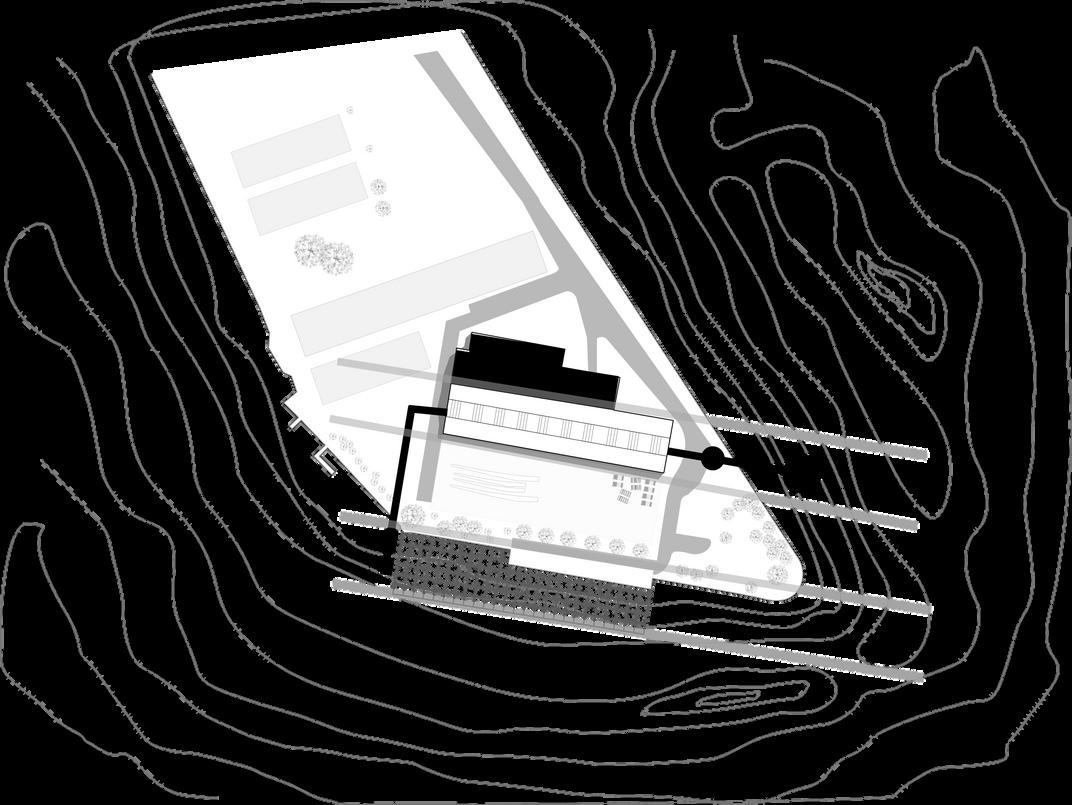




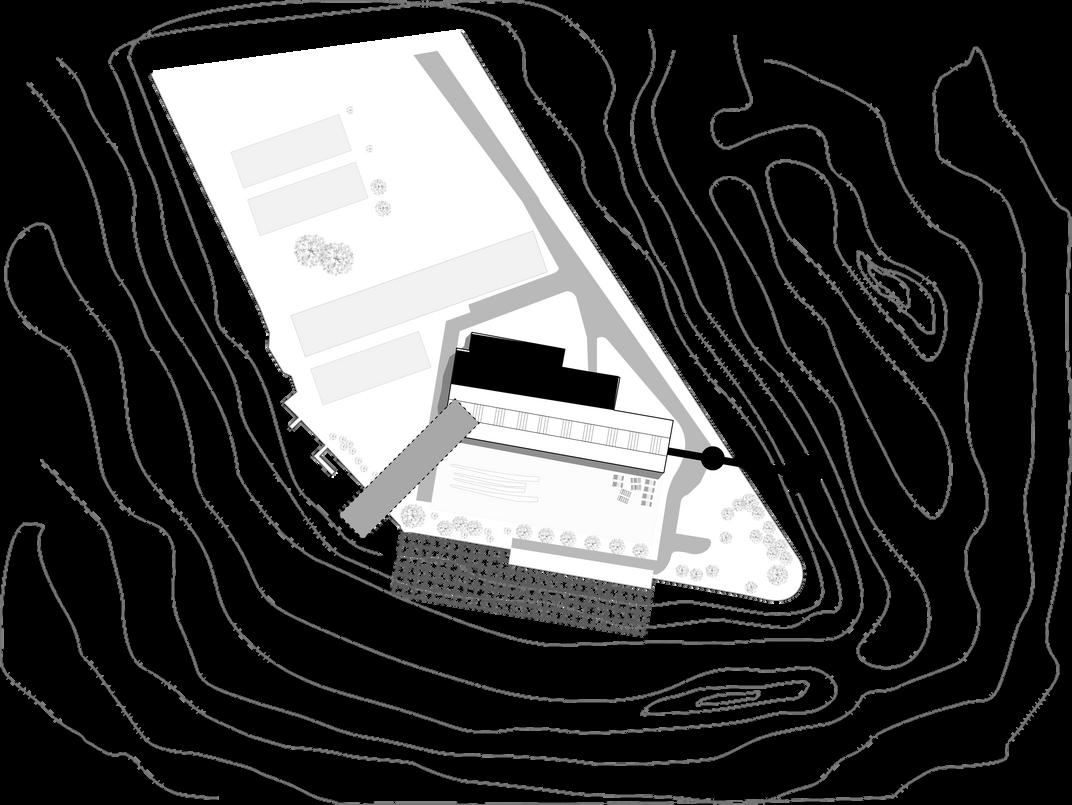

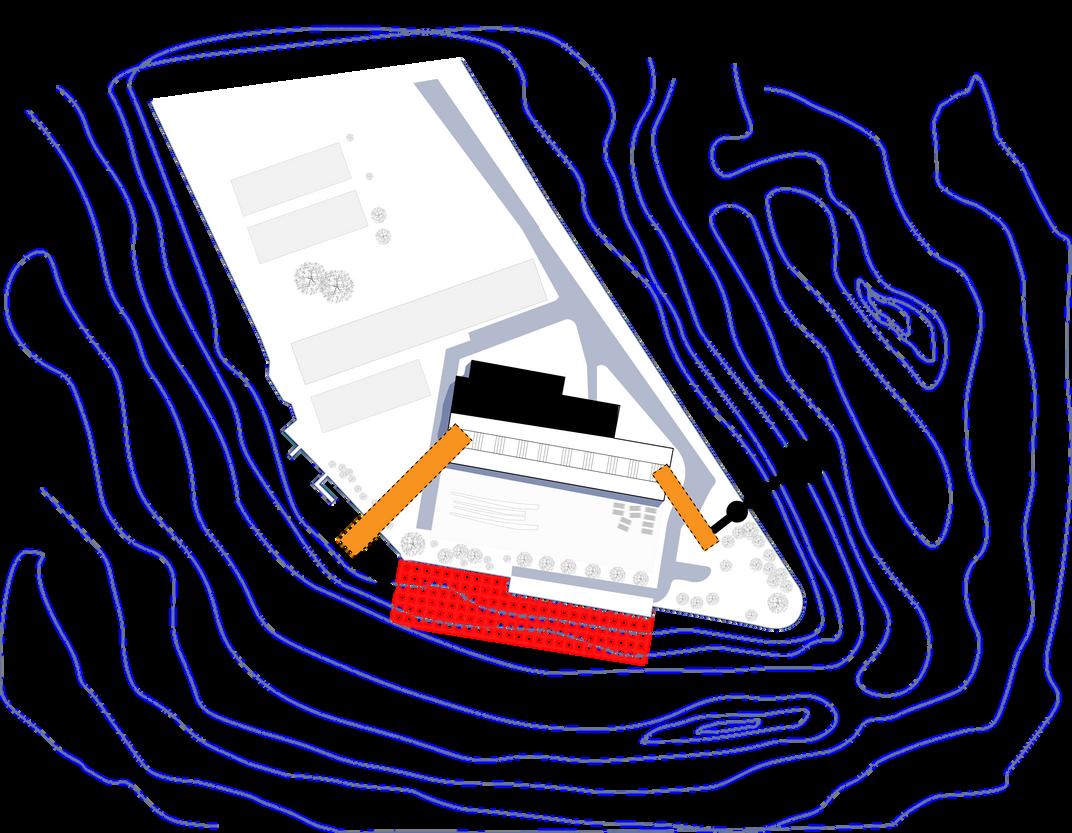

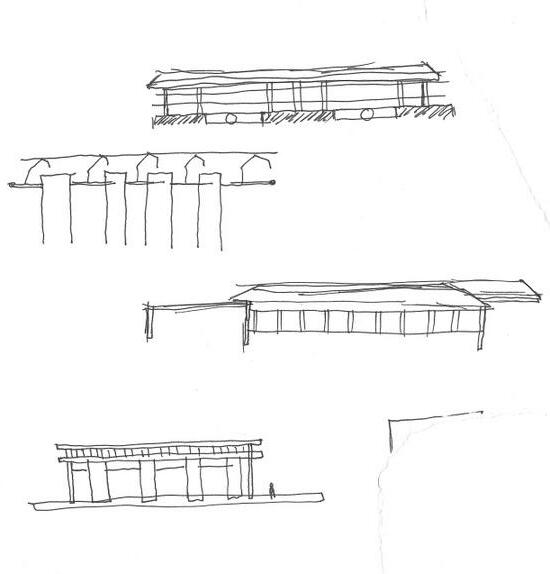

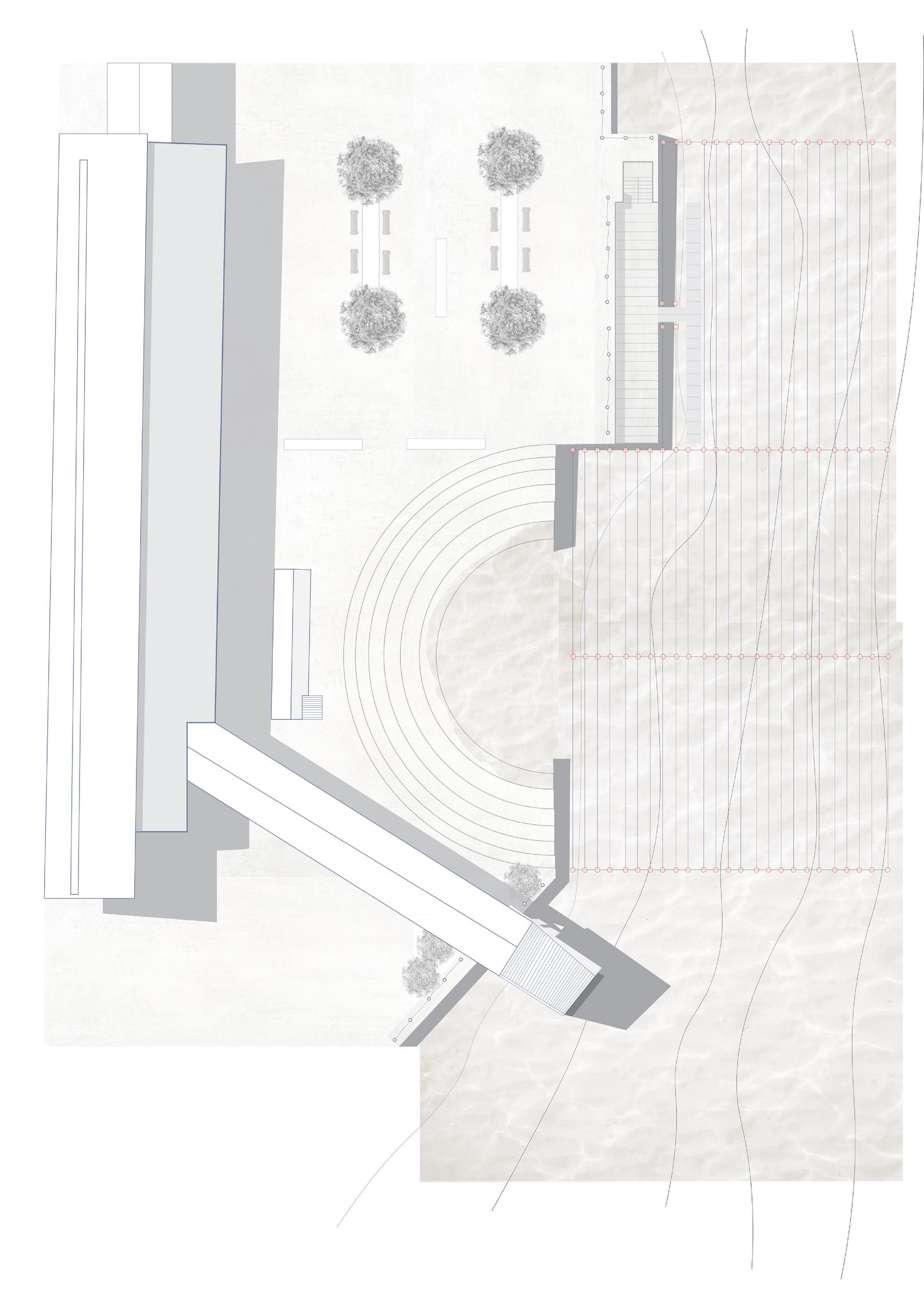
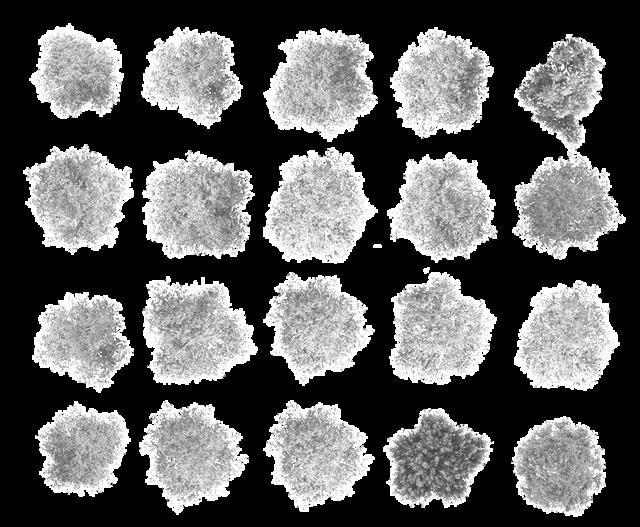







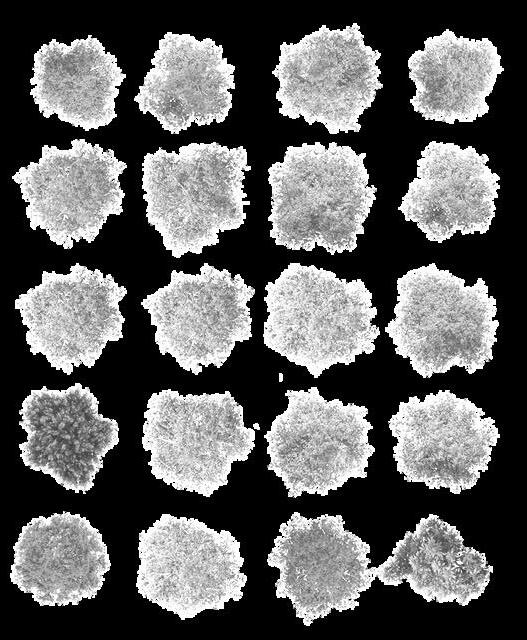


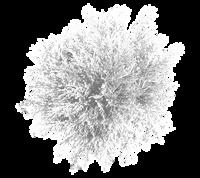


























Stage 3
DEVELOPING DESIGN BASED OF RESEARCH
Stage 3 was the first departure from a research orientated design program into an architectural proposition based on research Stages one and two helped define the project foundations but now was the time to finesse and refine these learnings into a project that challenged the architectural elements of the structure This was something that I felt lacked in the previous stage, although the core driver of the public domain was something that I took on moving forward Additionally, the reduction of residential dwellings then reshaped the research question into one that was more industry focused Having to control and design both were becoming more of a distraction than a contribution to the design development
Ships for export Instead, today this would be used to facilitate and mimic the time of industry on the point The crane would remove panels from the building and dip them in the water It allows them to soak overtime before taking them out and replacing them on the built form This was intended to enable the steel to rust and grow oysters naturally on them incases the building over time with a steel and oyster finish
S T A G E T H R E EThis led to almost restarting the project from the ground up in ways to think about the building, site and industry as a whole Was it going to be sustainable? Was it going to see the test of time? Why would people care? The questions that helped in the sketch design phase enabled the project not to be a reaction to the crippling oyster trade but be a promotion and safeguarding of the industry moving forward in the sense of experience and monument The design then led down a path of what things I could change from the original proposal I resorted back to leaving the shed in its whole entity rather than adaptively reusing it in the way of deconstructivism, one it only would add to the price but didn't add any value to the proposal The steel walls were partially removed from the structure and had a relationship with eh reintrodcution of the crane system that was positioned around the building This was placed as an acknowledgment to the cranes used on the site over 100 years ago to load coal on the
Additionally, the design added an extension to the filtration system by adding external oyster towers to the form These will continually release water back into the harbour and increase the efficiency of the filtration of the system These can be viewed from a different angle by the addition of another floor to the proposal The sky walkways allow visitors to walk alongside the oyster towers and around the filter tower at the end of the proposal The shuck house, market place and restaurant were also new additions in stage 3 and were placed around the surrounds of the existing building This allowed a public domain at the entrance of the building and an extension of offering to attract people to the site


Through studies in the previous research enquires, I knew Newcastle, due to global warming, is susceptible to flooding in the future due to many low lying areas, and Dyke point is one of these areas It was an issue that had been following me since the disasters of farms with rising temperatures means rising sea levels It came to me that rather than running away from these challenges, this needed to be viewed as an opportunity and used as a sense of embrace encouraging the architectural resistance in design I began looking at the flood mapping for Newcastle in 2030 2060, and the ranges of 0 5 meters rise to an increase of two metres This resulted in almost a complete wipeout of Dyke Point except for the main holding shed, which it is inland enough to resist the heights of 2060 and beyond This enables me to begin playing with land shapes and, in the design, propose to purposefully cut away at these predictions encouraging the water to take over now and shape the coastline of Dyke Point further to whatever it wishes to be This, to me, also seemed a life cycle of the site as before; ballast was filled to make the point the entire site was but a mere mudflat with mangroves and extremely low lying areas Thus taking away what shouldn't be there allows nature to take control once more Although
i mapped the predicted natural events, in went through sketches using of taken away land being manicured in very formalised and infrastructural grid like formations This sketch test didn't seem to reflect the intentions or ambitions of opening up the site to water rather, I went back to the original mappings and, through a series of sketches, slowly took more and more of the site away until I believed there was enough of a balance between protection, site and future erosion Additionally, the stage two research of flow rates in the Hunter River made predictions of where the erosion chamfering would occur, allowing for bigger chunks of the land to be removed or curved based on these flows Additionally, it was hard to predict as this is an industry now, and for the future, once dredging stops in Newcastle harbour allowing coal ships to enter naturally, the flow and rate of the water will change as the river floor builds up again
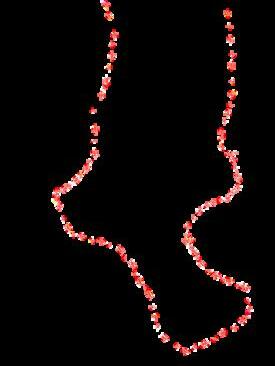





The design of the land in this stage entailed an eastern island hosting the main structure with a 10 meter span between that and the mainland of Carrington, with the built form extruding over this edge threshold and connected by bridges on the ground and first floor The allowance after to come closer to the building also allowed more natural osyter lots to be sued for harbour farming


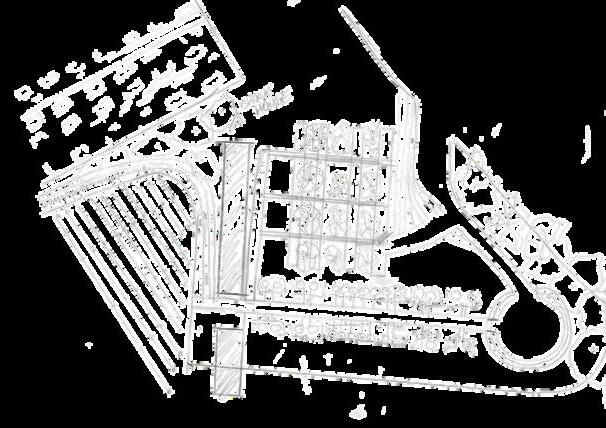















The De Novo in Full
7The project in its current form, a full De Novo, showcases a years worth of development and understanding of the site, context and industry It further finenesses the stage 3 development in a way that is better suited to the public realm whilst serving the safe longevity of the oyster industry in unique and plausible ways with the right investment by stakeholders The major changes in the fourth stage of the project came about in the form of spatial planning of site, built form and programming Facade finishes and additional land reductions
They are resulting in the emittance of a cooling effect from those services, especially in summer The effect of this mixed with controllable panels in the habitable spaces of the shuck house and restaurant allow this temp to be controlled Winter months were thought about also, and in these same spaces, the external finish in the facade is a series of moveable polycarbonate popout windows allowing cool air to come in but also providing a sense of thermal conducting, allowing those activities still to happen on the fringes whilst painting the requirements of the vertical oyster towers and the temps they require to run
D E N O V O I N F U L LIn stage three of the project's development, there was a separation in the program between the main building and other propositions across the site Additionally, an under design in site entry from the Carrington side of the site The fourth stage pushes those once external programs of the shucking house, restaurant and marketplace into the main shed and are hosted in the first quarter of the building, with the boat house remaining outside for everyday function and maintenance of the farm as well as tours of the De Novo harbour farm This move of higher public engagement inside the built form allows people to be side by side with infrastructure and have an open, transparent relationship with it continually throughout the building compared to the original design It also creates an ease of experience, allowing a seamless transition between programs across the site Combing all programs under one roof also improves the reduction of thermal comfort requirements This is done by allowing the large infrastructural metal pipes filled with water to pass through the core of the building and those additional programs through exposed ceilings
Outside, introducing a new wharf on the site's western side where traditional wharfs once stood allows an alternative route to the area connecting Honeysuckle and great Newcastle Additionally, a carpark has been added to the site to allow entry from the northern Carrington side of the site The carpark won't need complete construction due to the reuse of an existing concrete slab that holds items for the port authority This has been utilised to reduce cost and impact on the site and the environment However, as a proposition of a commercial entity, a truck and van bay next to the boat house has been introduced for product pickup for local businesses who purchase from the site
In stage three the idea of making the industry future proof and resilient encouraged the taking away of man made land on the point encouraging the propsoed flood maps of 2050 and beyond to take shape early In stage four further redcution of land hold was taken from the Southern and South Western corners This allowed the building to be
More dominant in the context and emphasises that the design is a haven and resilient from disasters the current oyster industry is dealing with giving a sense of longevity to the Department of Primary industry and Department of Aquaculture in NSW
Finally, the significant change was the emphasis on light, tactility and time through the manipulation of the facade treatment with a change of materiality encased within the boundaries of the original framework of the building The design of the facade is based on the industry, and the by product of consumption is shells Many projects have used shells to be crushed and used as lime to set foundations and additions of new structures for projects; however, this didn't seem feasible, quick or efficient to me Do people know the difference when visiting, or is a back story needed to be explained? This led me to shells being the facade treatment with an addition to the facade the more prolonged the industry stands as well as the consumption and farming rates rise This addition to the facade would be contributed by guests visiting the building and adding the shells consumed to the facade wall, as well as workers in the shucking house adding to the wall daily to encase the building in semi transparent, pearlescent shells eventually The reliance on industry and public domain to add to the building creates a sense of memory and experience on the site as well as a documentation of size and conditions compared to others over time Changing the facade needed to be tested in the documentation of shells, light and fabrication of the appearance of the contrast between slab and mesh Encoruagemnt of this idea led to the appro
ach of if the building is protected by shells almost like the oyster itself what else could be used as the by product of the consumption? This led to the testing of shell mosaics for the marketplace and again in a 1:1 fabrication setting which is expanded upon in this chapter as a journey through model testing and experience on site
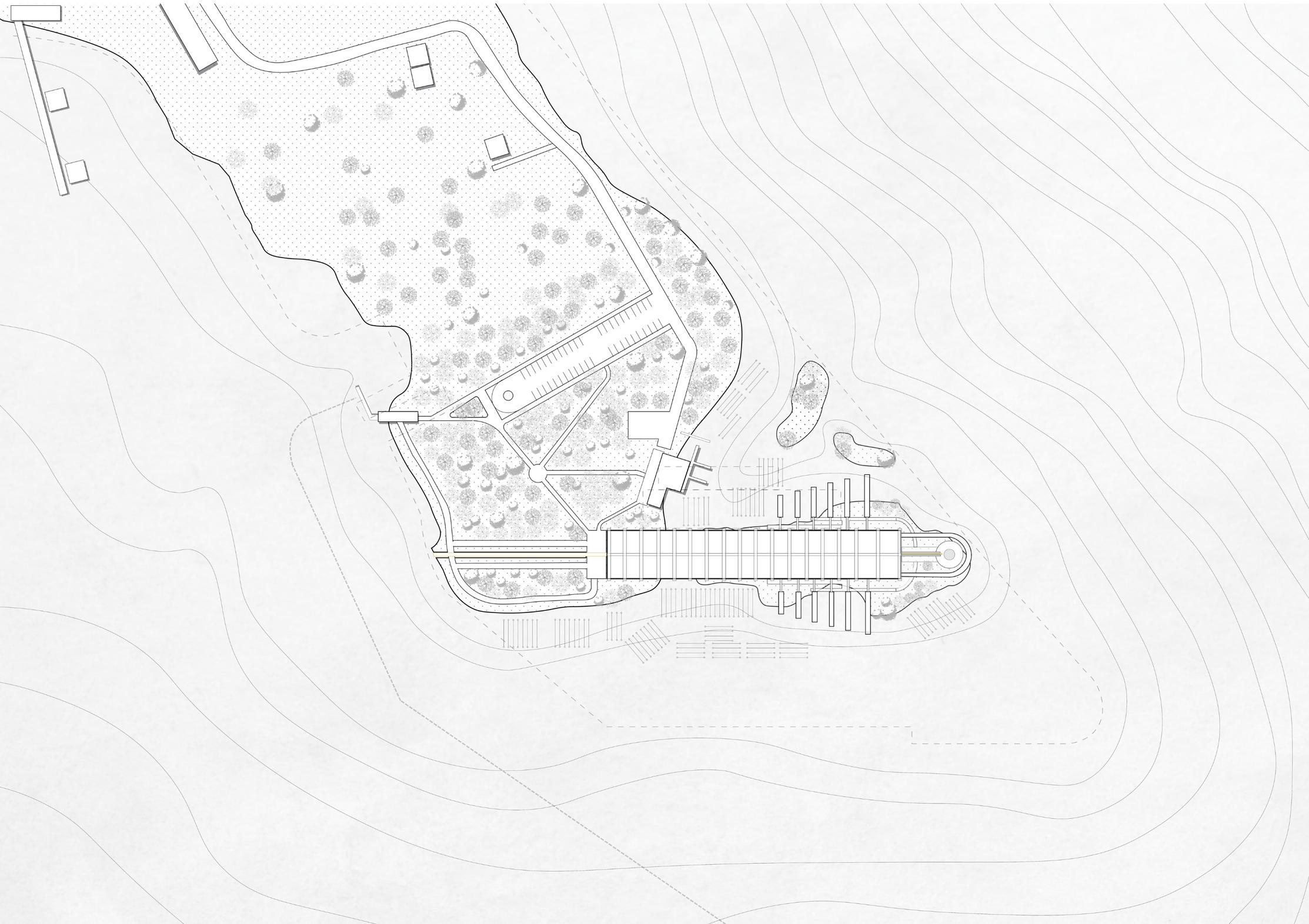

WHARF TERMINAL This is one of the newly created interventions along the site It enables accessibility from honeysuckle to the point in a connection to the existing ferry network along Newcastle Harbour As you depart the boat, you are greeted with a rich landscape along the water's edge, screening the site and creating a sense of curiosity The first glimpses of the building are seen as only a water spout flushing water back into Throsby creek The brass finishes drawing the eye and creates intrigue

to where it is coming from and what it is doing A short stroll to the boat house takes you through more landscape, revitalising the once concrete jungle with open pockets to relax and escape the rush of Newcastle The subtle addition of a low flow stream along the footpath encourages you to keep following it to the boathouse up ahead



THE BOAT HOUSE


This is where you may take tours of the De Novo project to see the day in the life of a traditional oyster farmer just like I did at the Broken Bay Oyster Co, understand the production methods and explore the site via water These tours hope to understand the industrys appreciation and create a transparent relationship between the industry and people It is also used as a storage hold for goods and export to local restaurants Walking to the building after the tour you can see the length and form of the building The 120 meter long intervention hosts an ad
vanced integration of a hydroponic set up to grow oysters vertically, creating more yield and reducing land hold The system starts at the right hand side of the site, sucking up water from the hunter river and cleaning it via nano bubbling This then filters down 120 meters along the site, veering off into oyster towers where the water is cleaned a second time before being filtered into a tank and returned to Throsby creek
The ground floor hosts thick oyster mesh walls with landscaping where you can continue walking along paths exploring the towers, landscape and waterways A void separation on the ground floor makes you walk across bridges to see the rest of the site but also separates the public domain to infrastructure as we walk upstairs
The first floor hosts a shucking house, restaurant and market hall before you can take the first floor paths and walk along the towers; being closer to infrastructure leads you to the nanobubble tower, which at the end gives you unlimited views of Newcastle




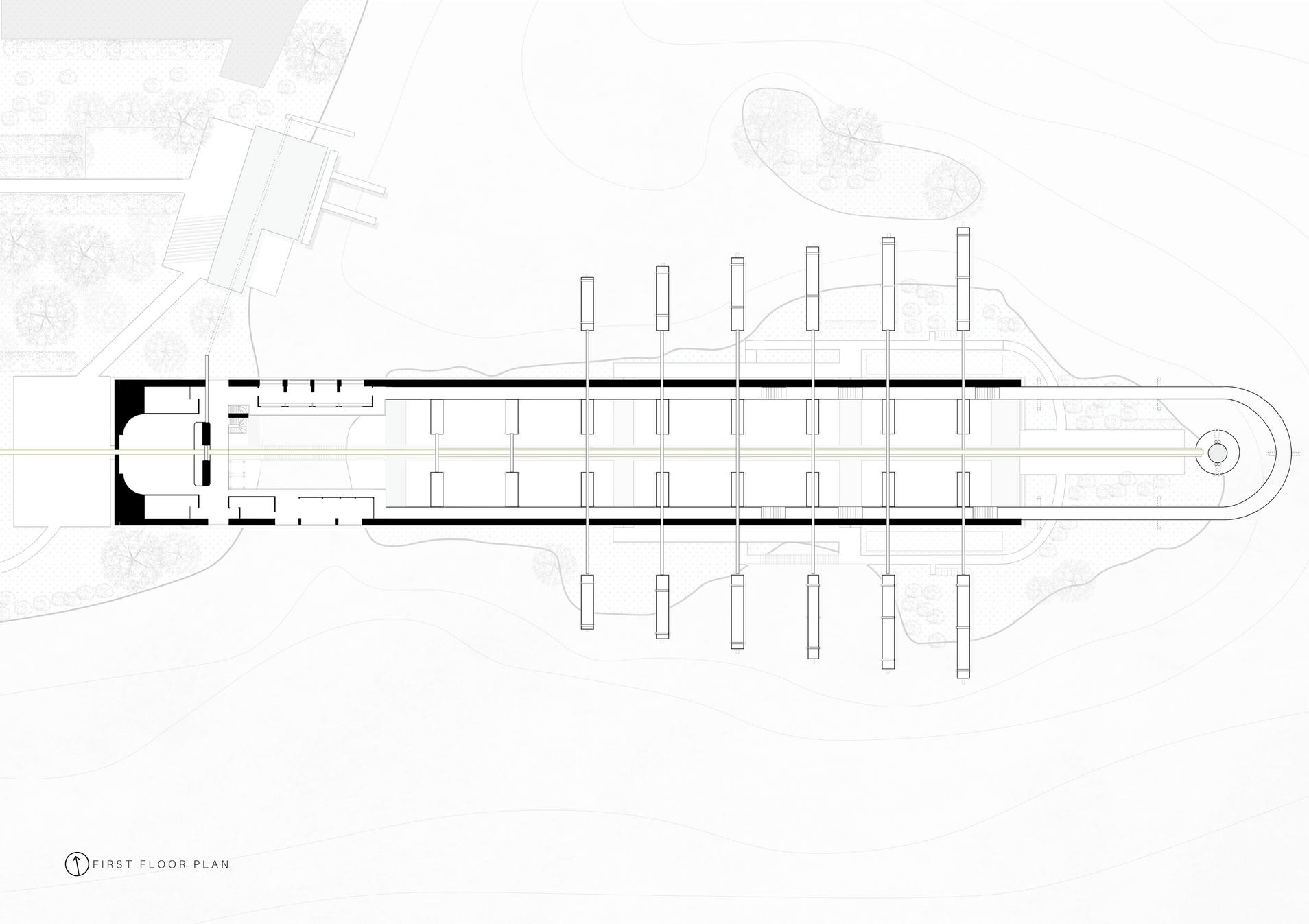

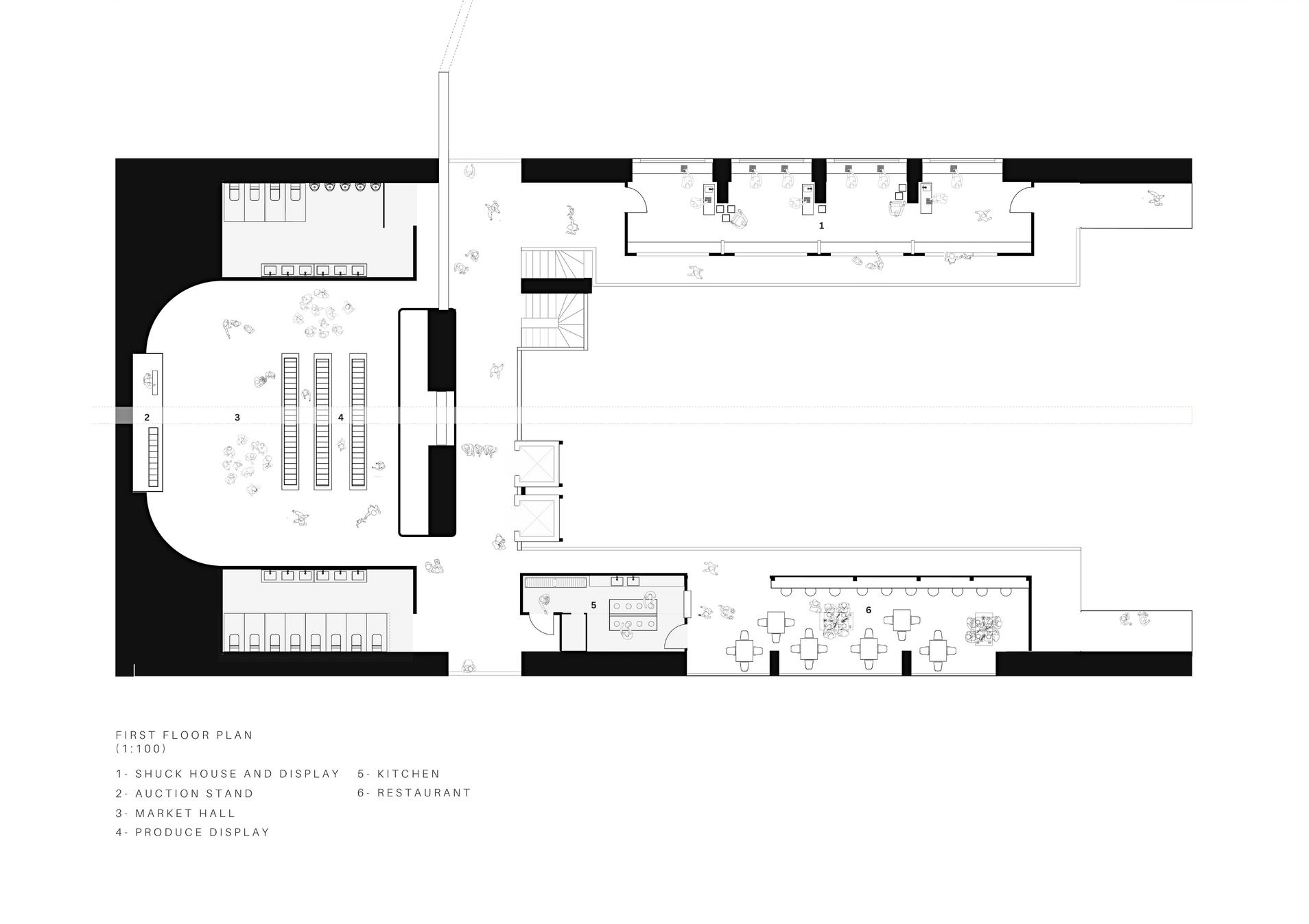

A RETURN TRIP TO BROKEN BAY OYSTER COMPANY
A stage four design intent of embracing oysters through the majority of built form required a trip back to the broken bay oyster company down at Mooney Mooney NSW There i collected oysters as part of further resreach and to have the materials for the required fabrication testing I wanted to do



Although this was the second time I had been at the oyster farm, it highlighted the industry's importance and requirement for a place of somewhat monument and safeguard moving forward Even in this second experience, I was picking up on things I didn't see the first time The amount of shucking and wastage was highlighted to me as an opportunity to support the ideas of an oyster facade d k h h ll f h design elemen collected 148 as purchased cleaned before colour was c testing of slabs,


MARKET HALL MOSAIC TESTING
The market hall's ambitions are a place where oysters can be bought in a stall environment or auctioned off to local restaurants and visitors To create a unique and memorable experience i wanted to test the idea of an oyster mosaic in hopes of creating glistening light and unique textures and experiences in the room The curved wall and ceiling in the design would also add an element of play memory and add to the play of sound as the main water pipe runs through the hall ceiling
To test this sketch idea, I used the oyster shells and placed them under a double folded sheet to break them with a hammer This enabled unique shapes and thicknesses in a similar sense to smashing or breaking pottery or glass Using a typical tile sample in an ironic fish scale shape, I began to test the look of the mosaic by placing the shells on the tiles partially as well as fully covered During this period, the natural oyster shells provided some form of reflection, but I noticed when cleaning them that when wet, they produce more of a pearlescent and enriched colour palette compared to when they're dry This resulted in finishing them with a polyurethane spray to give them a constant wet look Surprisingly the mosaic to touch isn't as sharp as expected, which was one of my main concerns before the test fabrication that it would result in cuts or sharp edges but naturally, sharper edges seemed to chamfer off



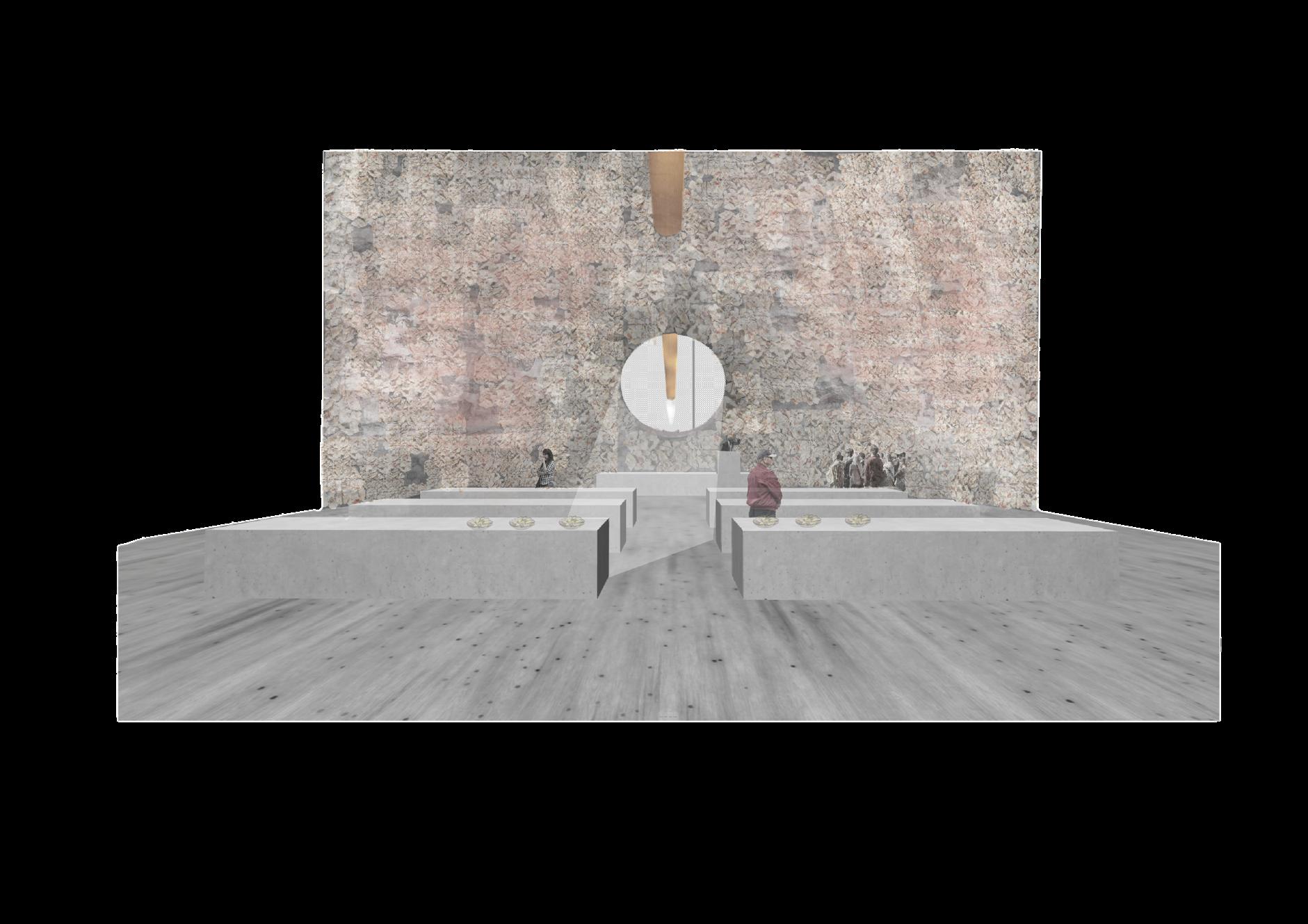

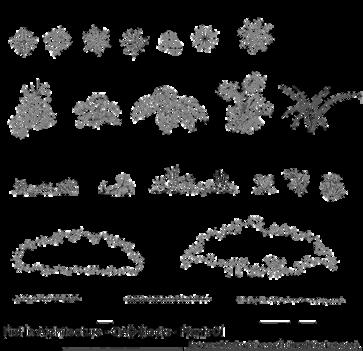








OYSTER RETAINING WALL FABRICATION
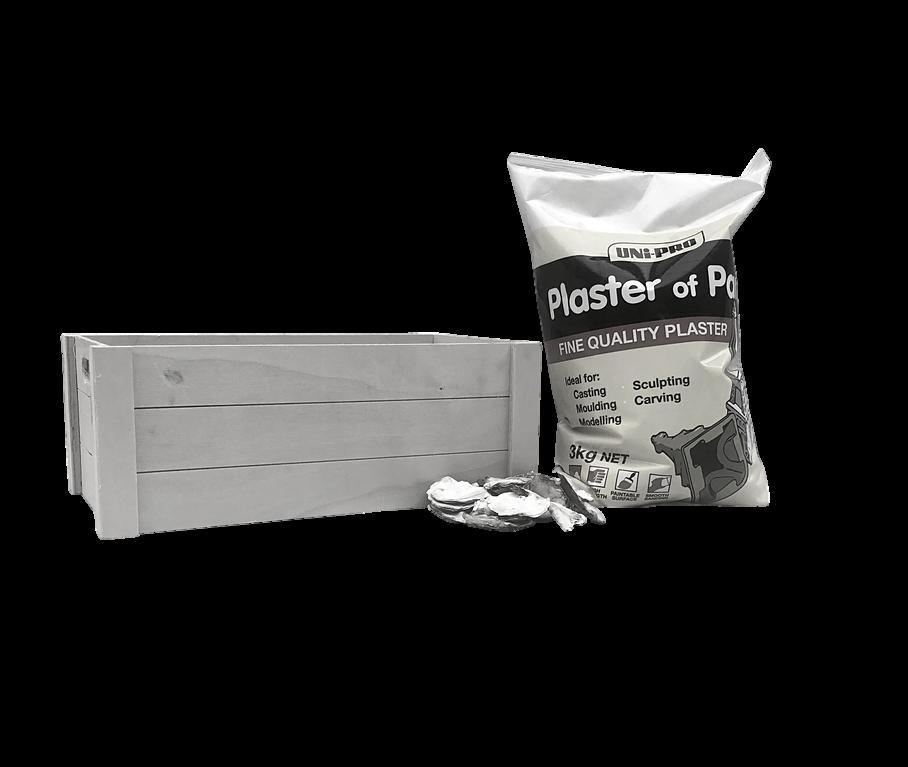
The current building has above ground footings where frames are located at around 1 metre in height These are currently segregated every 5 to 10 meters However, I wanted to continue this wall throughout the 120m on each side of the built form Rather than continuing this language with normal concrete, I wanted to continue reusing the wasted shells as a textural element within the slab that allows shadows, colour and sensory stimulation as you walk alongside the built form
To test what this would look like, I used plaster and a box cast to set the formwork and, during the pour, placed random shapes and fragments of oyster shells into the mix as well as mixing the cast and using a tamp to remove air pockets to make sure the fabrication would set evenly and correctly After 48 hours of set time, I removed the formwork and looked at the results I was overall happy with the outcome and its textural language Overall the colours and light on the test worked well, and especially happy with the extruding of some shells allowing small shadows to be cast on the slab itself If this test was to be done again, id allow an allowance for more extruded species to play with the shadows and light more intensely, especially over a longer fabrication test piece, as this fabrication was more used for height purposes as a base for the facade mesh finish
This addition adds an embodied carbon element which we have tried to mitigate throughout the entire design by adaptively reusing the building its form as well as the operational waste returning to the built form I believe this addition can be counteracted by the proposal of heavy landscaping across the site in baron areas as seen on the site plan
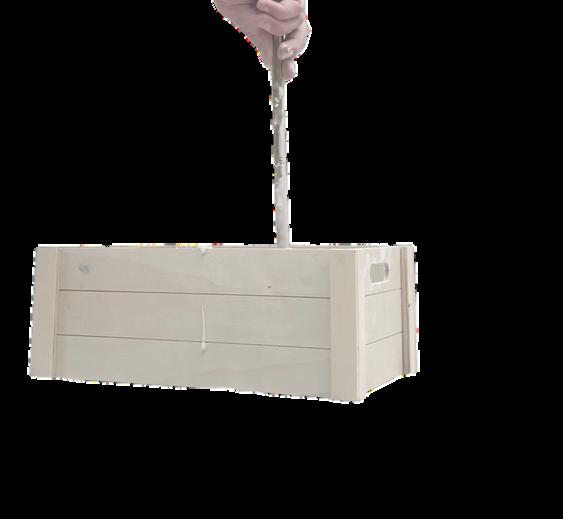




OYSTER FACADE TESTING

The proposals significant change when comparing the third stage to this is the use of a new mesh system for the facade compared to a timber combination in the previous scheme Inspired by Herzog and de Meuron Dominus Winery, the structure takes form over time and will eventually be encased by oyster shells contributed by farming activities and tourism to the building This means there is a reliance on thermal comfort by the chosen material, the oyster shell This has been tested in areas of China in remote fishing villages where oysters were commonly used as a facade combination as well as a textural element It should be noted that these areas of the facade are for zones specific to the infrastructure of the pro and habitual areas are still using timber polycarb members to control the the properties of the building This means steel sh are removed and taken for recycling and us the wharf for the steel components of the desi
The new mesh system sits behind the or frame at 500mm in depth, and the wall mes also be at 500mm, allowing a meter toler between the external and internal environm The wall will also host draining systems from roof garden and have outlets for this wastage returned to landscaped zones along the edg the building at 15 meter intervals The fabric test was done in conjunction with the slab te as these components are combined in the de The mesh slab created was based on consu 12 oysters at the restaurant on site and the ca you would receive after consuming to place i wall I sued this fabrication to test initially shadows that's may fall through the mes certain times of the day This provided a really
hatch effect in the midday sun Under intense light, the shells produce a form of transparency, but this relationship solely contributes to the thickness and size of the shell Thinner shells naturally produced more transparent light compared to their thicker counterparts Initially, it was an aim to fill these mesh boxed members full however, due to this fabrication test and finding the inconsistency in transparency, a 6 or 12 oyster option was created These leaves have large enough pockets in the facade for light to come in and allow natural airflow into the building Again it allows the operational carbon output of the building to be reused, neutralising its impact by placing the by product in the facade
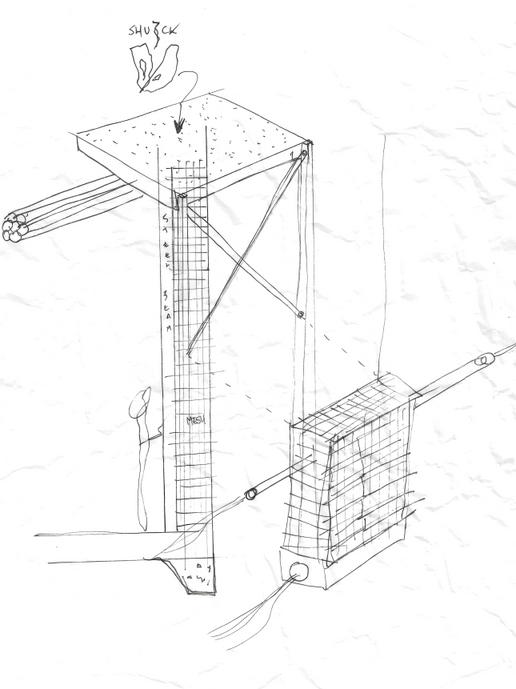
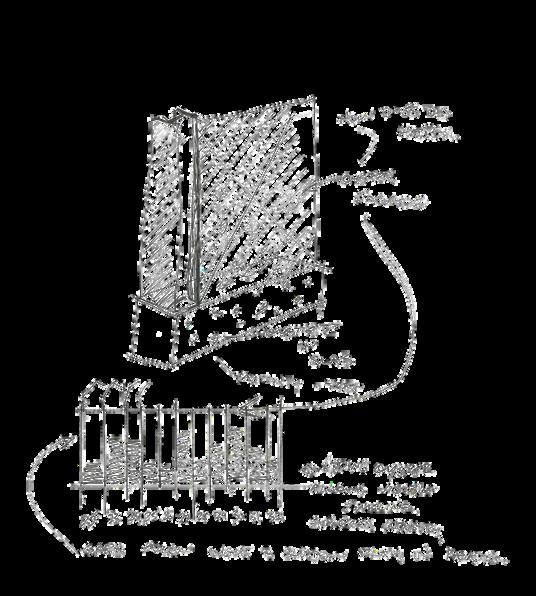










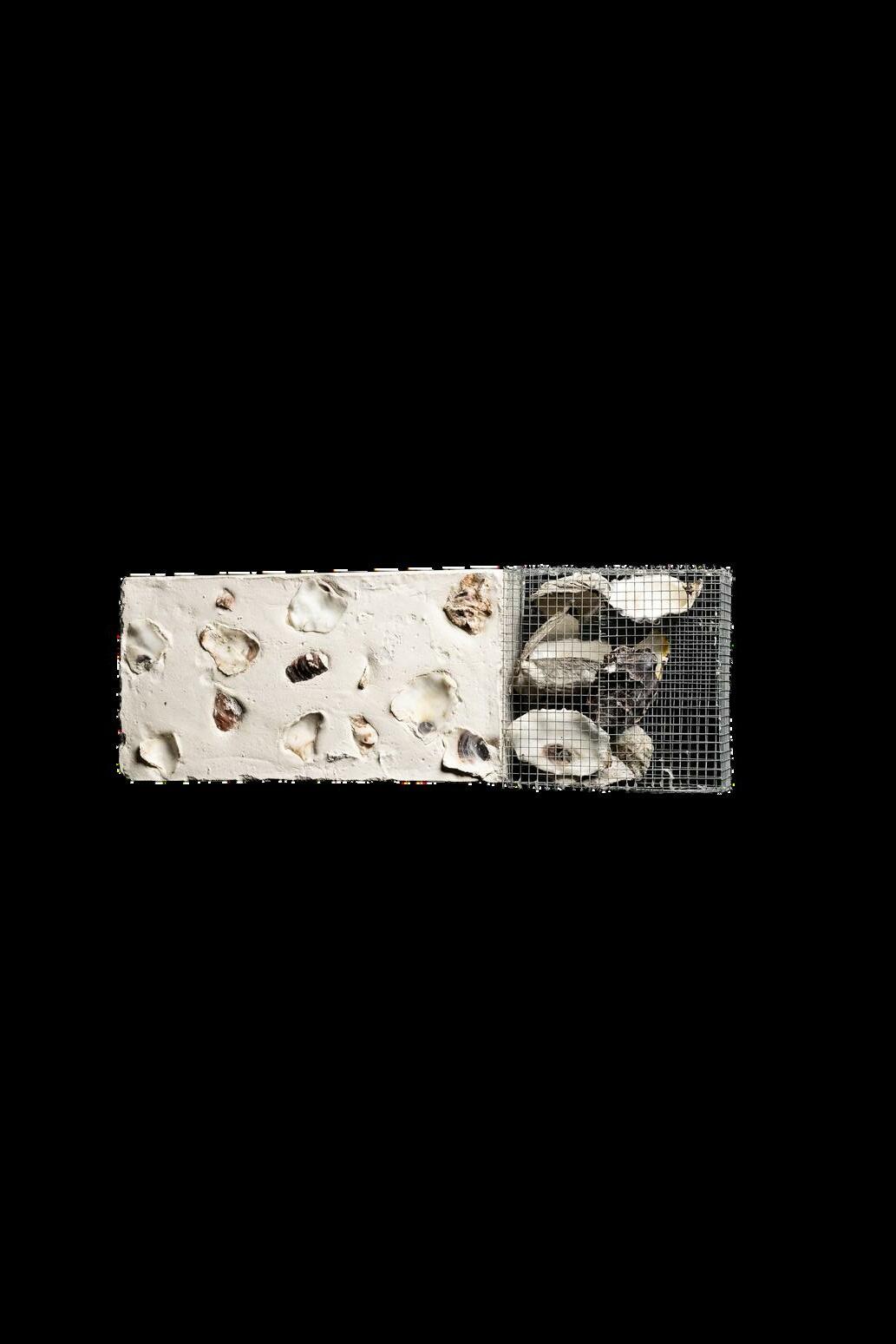














SHUCK HOUSE is a place where you can learn to shuck your oysters from the farm or watch the crafty skills of the workers This again gives transparency to how osyters are delivered to the plate and adds another experience level to the understanding of the industry The shuckers can either face visitors and engage in education or look over the hunter river next to oyster mesh walls and poly light wells adding to the play of light and texture This is one of the main contributors to the oyster wall As oysters
Are shucked they are placed in the wall or collected in hessian bags to be distributed evenly around the site over time



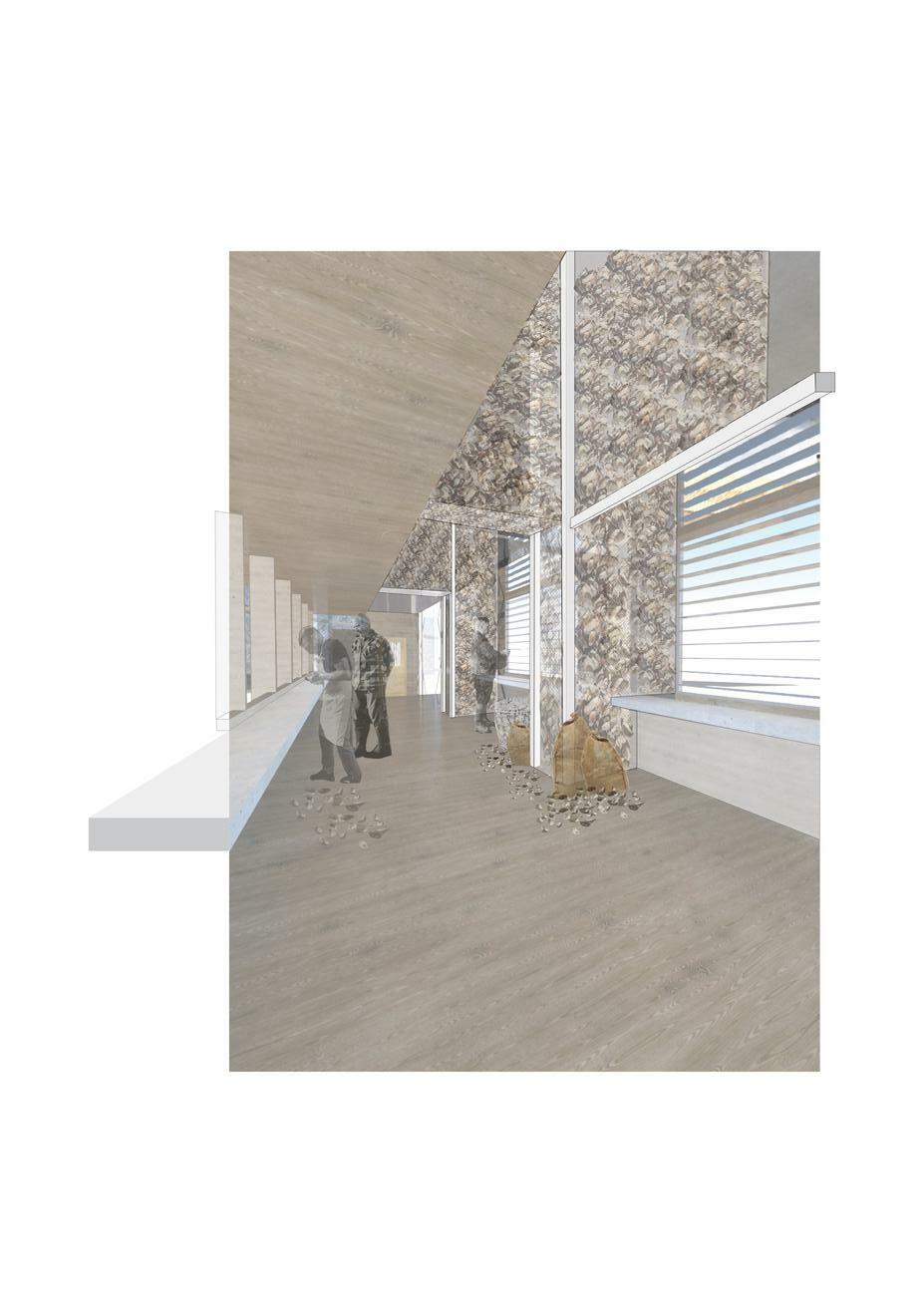
THE RESTAURANT offers a place to relax, consume the freshest produce from the farm, and try alternative ways to consume oysters, whether via the classic natural, Kilpatrick, Rockefeller, or so much more The views look back on Newcastle, or you can sit and look at the mechanics of the built form as the pipes rush down the centre core of the building As the consumer, you can also add to the wall by purchasing half a dozen or a dozen oysters and contributing to the facade over time, adding your part to the industry
This chosen facade treatment adds a sense of memorability, contribution and unique experience, and a thermal comfort regulator during summer as the cold, thick water pipes emit coolness while the thick calcium shells of the oyster block and reflect external light


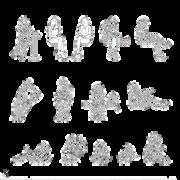

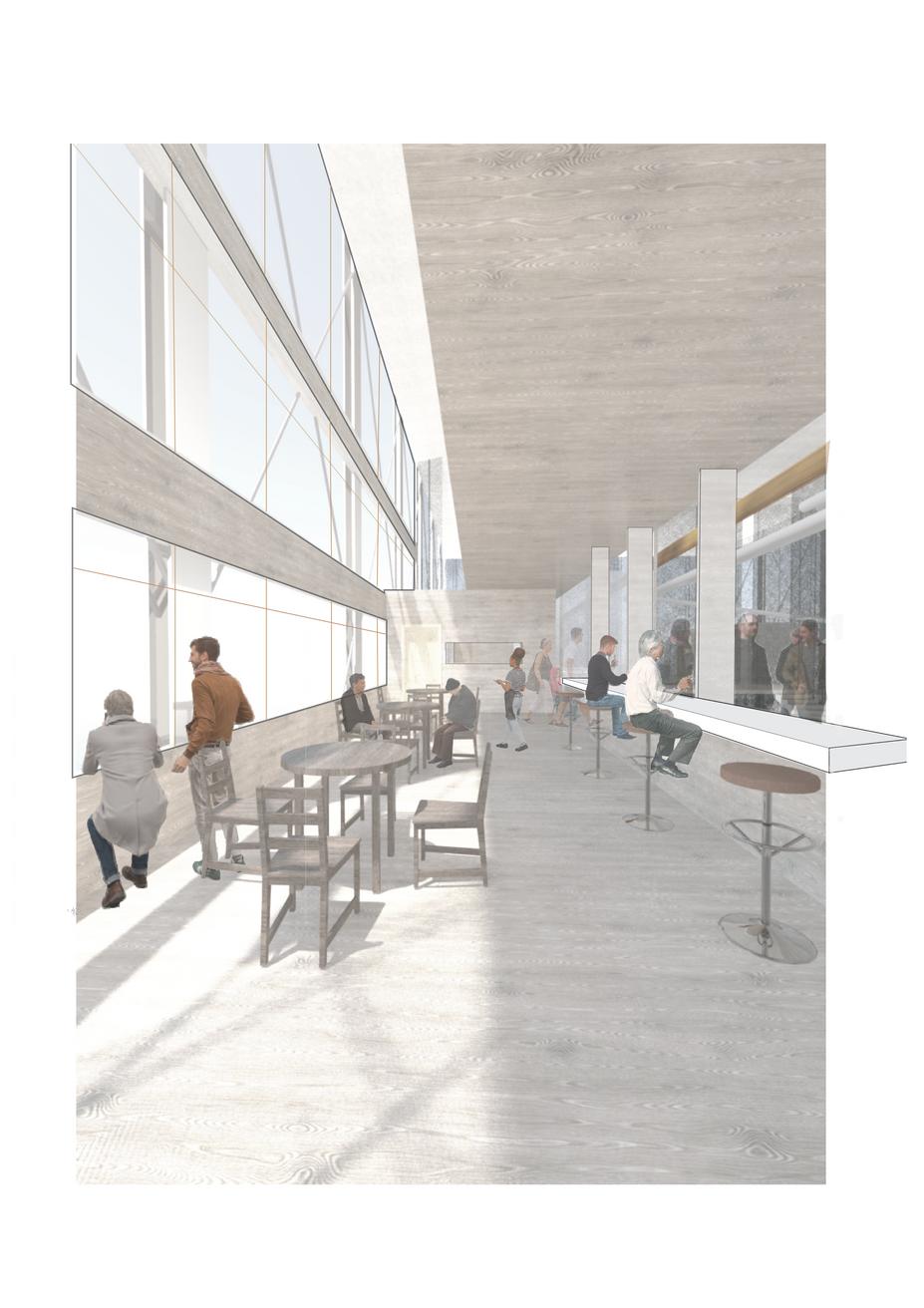



As you leave the site, youare left witnessing the structure and monumental design as its arms reach over the water's edge, and the filter towers rise high above the sky A place of monument, significance and ore as it silhouettes the Newcastle harbour skyline The ability to engage with the industry in a hand on approach and a sense of experience enables one to understand the current climate of the oyster industry and promote its longevity
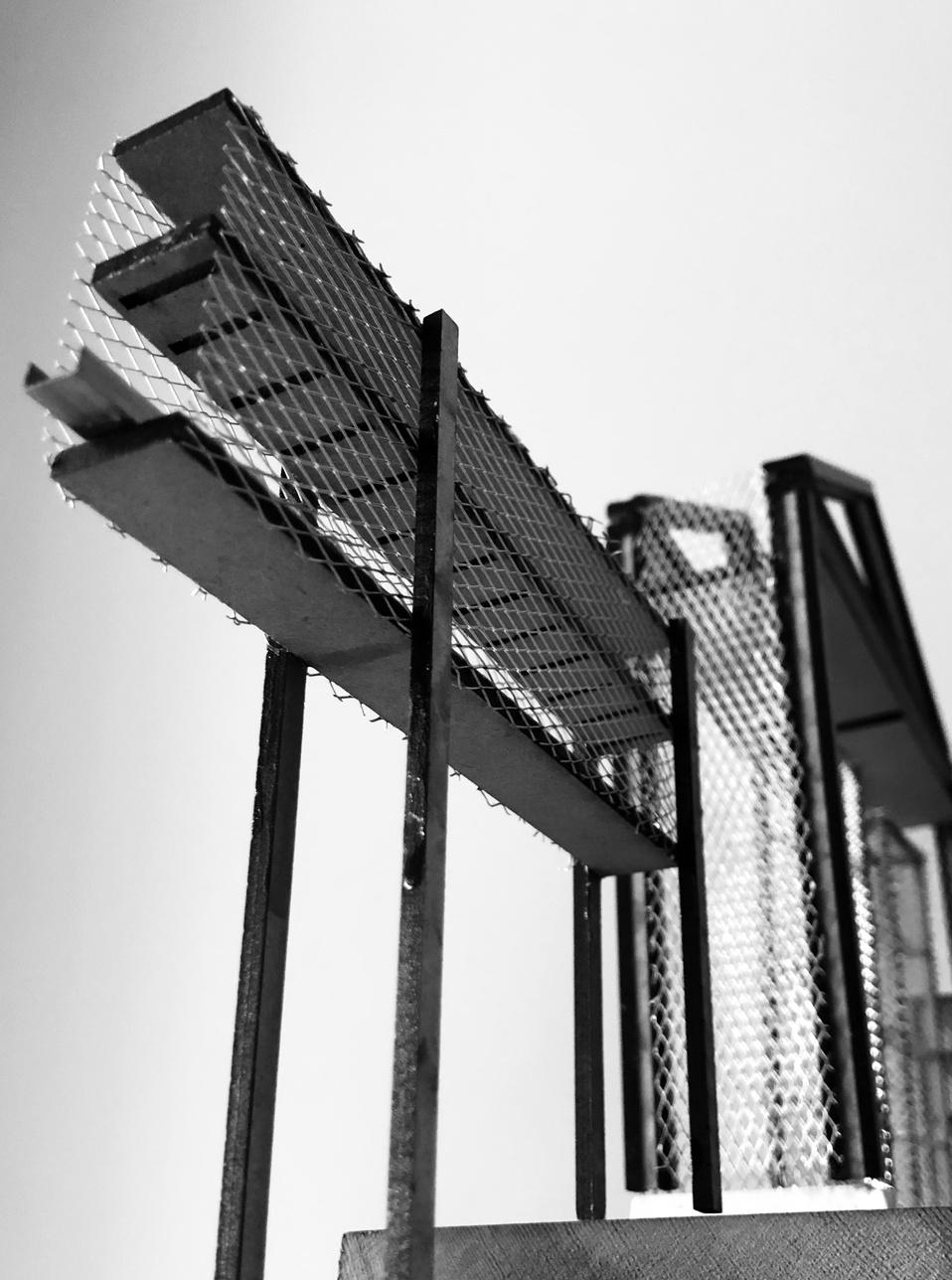
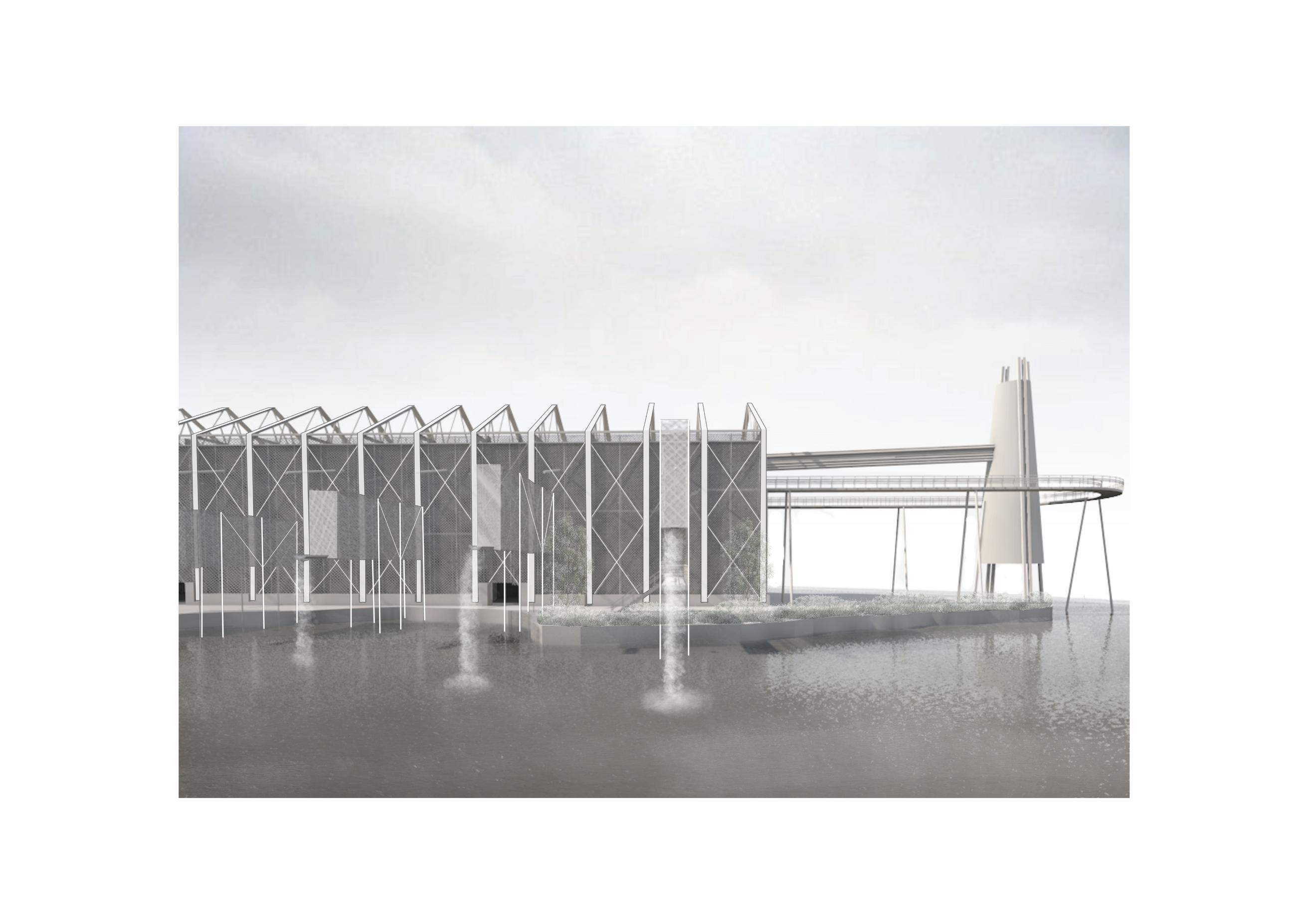
 D E N O V O R E F L E C T I O N S
D E N O V O R E F L E C T I O N S
De Novo Reflections
8This collection of work sits as a piece of research that sparks conversation and awareness and encourages the experimentation and limits of aquaculture not just within NSW or even Australia but as a research analysis and reflection globally It promotes a relationship with water that celebrates and embraces rather than running to higher grounds Although the issues raised are close to home, they are undoubtedly the issues of global warming, rising sea temperatures, and increasing natural disasters that are common occurrences globally Just as we are adapting to these conditions on land, it is required to provide efficient and adequate solutions on the edges of waterways This isn't a reaction only for communities but a response for small businesses and livelihoods that require water for a way of life
This isn't an unusual relationship within an Australian context with rural NSW communities along the Darling River living with the river as a mode of transportation and life but a risk that the river may burst its banks and destroy belongings and tear up remote communities This balance between nature and civilisation is one of romance and return One that is seen even on the east coast through research and site visits The relationship can be somewhat argued as amplified due to these bodies of water in now densified areas
of exporation once stood A silhouette of a capitalist venture still remains, yet the people of Newcastle allow this mystery of business to have a stronghold on a callosal scale right in front of them This must stop, and the views and infrastructure must be considered in relation to people and the scale of these contributions The De Novo project allows this openness and welcoming via public realm engagement and tourism operations, broadly serving as an economic tool for Newcastle and the state
The De Novo project allows this intense relationship to be embodied and enjoyed uniquely through transparent industry and infrastructure mechanisms A relationship and experience which is hard to obtain with other industries but also on a a site like Dyke Point Where a dirty yet rich history
Although this project through research highlights the need for alternative thinking of oyster farming in general, aquaculture, and other industries affected by natural disasters The push for projects to go ahead at this scale is one of the extreme fiscal decisions based on clients As stated, the project's target is The NSW Department of Primary Industries (DPI) and the Newcastle City Council (NCC) The awareness of the DPI that alternative ways of farming are required, as stated in annual reports from 2017 2021 emphasises the importance of projects such as this to be executed or even used as a point of conversation to make aware that alternative methods are being thought about and must be acted upon It has been up to the local businesses to create this alternative thinking, yet it comes slowly as these concepts must take a financial risk with no guaranteed reward This, at a time when the industry is so unstable, results in no development of other methods This has resulted in relying on tourism heavily to create enough yield for these farms to Survive, although this is not enough to sustain businesses long term across the state Projects like
this should be solely pushed by government bodies such as the DPI otherwise industry will hit a crossroads between locally sourced produce and relying on overseas imports to fuel consumer demand Concurrently resulting in historically rich businesses and communities being lost in the process
A suggestion of collaboration as a joint venture would be the best outcome for this project A collective buy in by oyster farms across the state, NCC, DPI and The Port of Newcastle Sharing in percentages of revenue of the site also pleases all parties and their respective views That being, NCC emphasises pushing away from relying on the coal industry to fuel activities around the city and being self aware that the city's work, age and political views are shifting into a more progressive swing This is outlined in publications such as Newcastle's greater metropolitan plan or a 2030 Newcastle This view on creating public domains, adapting to the environment and creating more engaging contributions to the cityscapes aligns with the De Novo project's ambitions
A strong DPI investment on the site would allow the longevity of oyster farming to continue for the next 50 years Creating somewhat of a safe house resistant to the external factors the industry faces The design, in its ability to guarantee a baseline amount of yield, allows not just financial security but the ability for alternative methods to be tested moving forward, allowing allocations for advancements or similar systems to be rolled out across Newcastle or the east coast of NSW in strong industrial townships and communities such as Wollongong or Port Macquarie I think the De Novo project's current scale, although suitable to Newcastle's context, would be stronger as a model to be rolled out, for instance and what smaller interventions would look like or if they would have the same impact or feel as the current proposal
Perhaps it is not a repetition of the architecture as I feel it would lose its significance or sense of memory to people who see it, but maybe it's the manipulation of the system in alternative ways that create multiple architectural outcomes A catalogue of filter systems housed in architecture uniquely responsive and understanding of the site Additionally, one is altered based on the industry's current external climate and needs
The ability to use Dyke Point would be of allowance to The Port of Newcastle Their reliance on the coal trade will cease in 2040, and their stronghold across the northern zone of Newcastle is one they can either hold onto for other trade activities or slowly give back to the city and the community The project's ability to be on a once coal site has two bonuses for the authority It enables the site to be reused in a way that gives them fiscal and environmental benefits Using the project's filtration systems and the oyster's natural ability to filter and clean the waterways they have damaged Creating a stronger image for the authority and one of care for the community and waterways The ability to get all three partners on board would be somewhat difficult, but I think viable based on the current political and climatic landscape A project like De Novo proposed 10 years ago may not have the standing it has today and would lose public and investor interest rapidly
The De Novo project isn't just a place to visit, but it is a fundamental step in the promotion of longevity of the aquaculture industry in NSW A place where farmers can unite, combining experience, skills and commitment to the industry in a design that reflects their current openness and vulnerability in an attempt to save the industry they love The De Novo project ensures the love and survival of oysters will carry on for many more generations to come, and Newcastle as a broader community is saving one oyster at a time
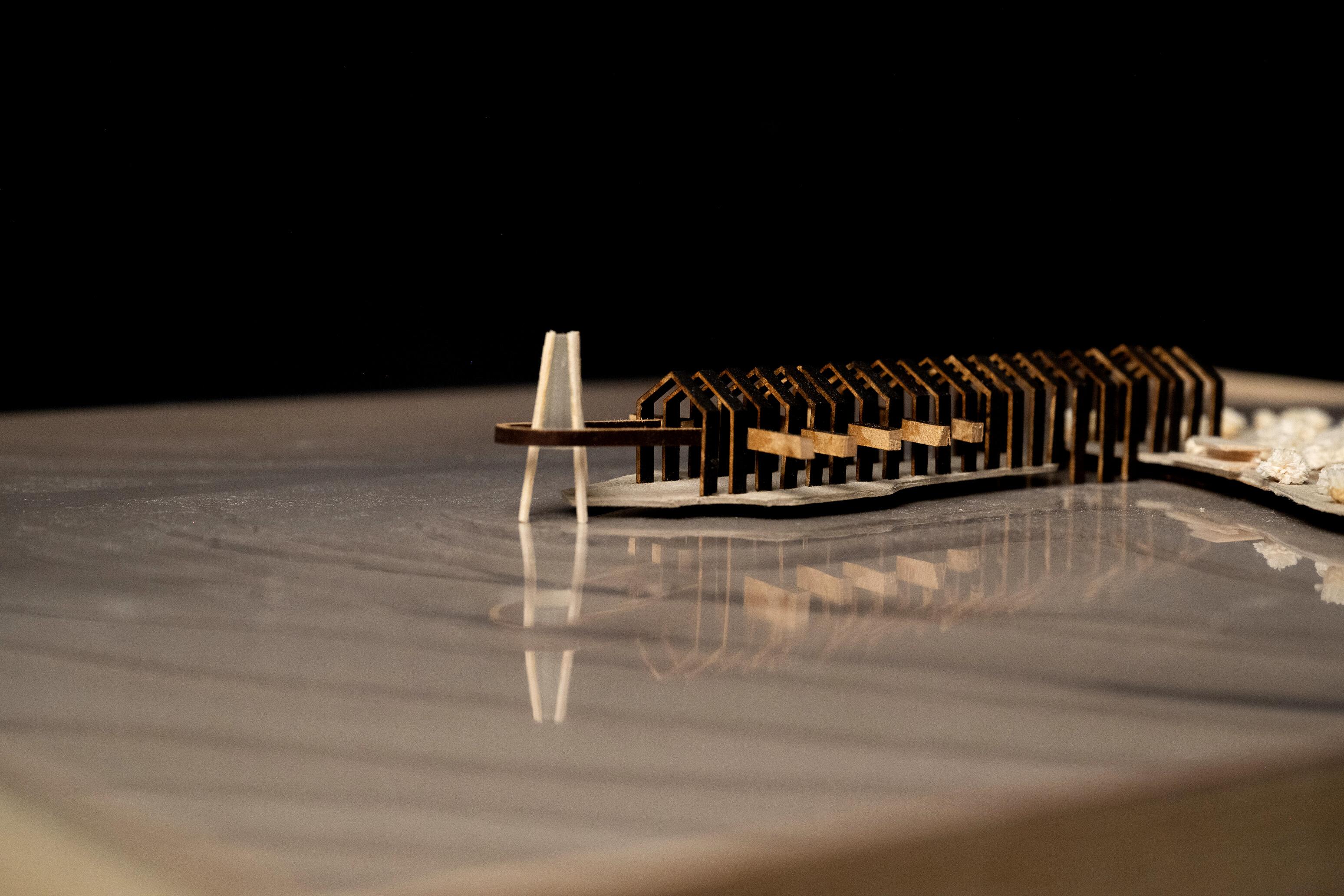



"ViewofNewcastleHarbour1880"Unknown.(1880).ViewofNewcastleHarbour[Image].Retrievedfrom https://livinghistories.newcastle.edu.au/nodes/view/19143?
keywords=view%20of%20newcastle%20harbour&highlights=eyIwIjoibmV3Y2FzdGxlIi
"NewcastleSteelWorks”byDavidMoore1963
["CoalLoadingattheDyke"1894Snowball,R.(1894).CoalloadingatTheDyke[Image].Retrievedfrom https://livinghistories.newcastle.edu.au/nodes/view/46311?
keywords=Dyke%20Coal%20Loading&highlights=eyIwIjoiZHlrZSIsIjIiOiJoZWFkaW5nIiw
["OldharvestingwaysatCoffinBay"N.D
"ClearingdebrisatCoffinBay"N.D
History.(2022).https://www.coffinbayoysterfarm.com.au/history.html History.(2022).https://www.coffinbayoysterfarm.com.au/history.html
Bountifulleases:GwawleyBayin1958byGeorgeLipman
[OysterDissection(1979)EncyclopediaofEarthScience. (SewellH.Hopkins)
StudyofPacificOysterfromCamelEstuary (SusanRay)
KenCowden-AnoysterfarmerwhousesamixusedstrategyhereinNSW.Ken statesthetrendingmethodcouldbeaneffectiveinsurancepolicyfortheindustry
"LunedeSang"ModelbyCrofiArchiects
ZoranPerin,h.(2018).CHROFI.Retrieved8June2022,fromhttp://www.chrofi.com/project/lune-de-sang-pavilion
https://spo.nmfs.noaa.gov/sites/default/files/pdf-content/MFR/mfr633/mfr6333.pdf
Articles and Other
DepartmentofPrimaryIndustries.2020."AquacultureINNEWSOUTHWALES".NSW:NSWGovernment. "PresidentsMedals:OysterFarm".2010.Presidentsmedals.Com.http://www.presidentsmedals.com/Entry-25341.
Carrol,David.2022."World’SLargestCoalPortFlicksSwitchTo100%RenewableEnergy".PV,,2022.
"Australia:ExportValueOfCoal2021|Statista".2022.Statista.https://www.statista.com/statistics/1120570/australia-export-value-ofThompson,Frances.2008."NewcastleHarbour&HunterRiverBottomRevealed".NewcastleHerald,,2008. "HarbourFarm2.0".2013.Effekt.https://www.effekt.dk/harbourfarm. Interactive,Warp.2010."PresidentsMedals:OysterFarm".Presidentsmedals.Com.http://www.presidentsmedals.com/Entry-25341. "OperationCrayweed".2021.OperationCrayweed.http://www.operationcrayweed.com/.
NewcastleHerald.2012."NewcastleHarbourClean-UpContinuesFollowingOilSpill",,2012.
"HowDoesBallastWaterAffectTheEnvironment?-Sensorex".2019.Sensorex.https://sensorex.com/2019/12/24/howdoes-ballast-water-affect-environment/.
"Oyster-Tecture-SCAPE".2009.SCAPE.https://www.scapestudio.com/projects/oyster-tecture/.
2019.https://www.natureaustralia.org.au/what-we-do/our-priorities/oceans/ocean-stories/oysters-filter-water/.
2020.Depws.Nt.Gov.Au.https://depws.nt.gov.au/__data/assets/pdf_file/0004/589477/waterres-nt-factsheet-watervolumes.pdf.
Figu(TheChangingFaceOfOysterCultureInNewSouthWales,Australia.2009.Image.)AnatomyofanOyster (OperationCrayweed".2021.OperationCrayweed.http://www.operationcrayweed.com/.)
NewcastleCityCouncil.(2018).GreaterNewcastleMetropolitanPlan.Newcastle:NCC.
NewcastleCityCouncil.(2020).Newcastle2030-CommunityStrategicPlan.Newcastle:NCC.
Aquaculture–NanoBubble.(2021).2022,fromhttps://www.nanobubble.com.au/applications/aquaculture/
Kahn,P.,Zhu,W.,&Nasir,G.(2020).Micro–nanobubbletechnologyandwater-relatedapplication.Retrieved2022,from
HoopersIsland'sFloatingUpwellersHelpJapaneseOysterFarmers.(2021).fromhttps://hoopersisland.com/grow-out-gearshipped-to-japan/
WhatareNanobubbles?|Moleaer.(2020).Retrieved2022,fromhttps://www.moleaer.com/nanobubbles
Gortan,R.(2021).Whylivetanksarethefutureofoysterstorage.fromhttps://thefishsite.com/articles/why-live-tanks-arethe-future-of-oyster-storage

